SCHEME OF WORK
WEEK TOPIC
1. Revision of first term,s work
2. Changes in living things
3. Changes in non living things
4. The human body (skeletal system and movement)
5. Respiratory system
6. Circulatory system
7. Digestive system
8. Reproductive system
9. Excretory system
10. Revision
OLD SCHEME
WEEKS TOPICS[/b]
1. Review of first term work
2. Physical appearance
- Physical features, size, shape, height, race, ethnicity, colour of skin, eyes and hair
- Body images and self esteem.
- Uniqueness of man e.g. reasoning, problem solving, intelligence skill, inquisitiveness, observation, measurement, inference.
- Meeting the challenges of perceived healthy and inadequacies.
- Media conception of beauty.
3. Elements, compounds and mixtures
- Definitions and examples
- Method of separation of mixtures.
- Extraction of salt from sea water
- Crude oil and petrochemical
- Meaning of crude oil & petrochemical
- Refining and use of crude oil and petrochemical.
4. Hydrogen and rusting
- Preparation, properties and uses of hydrogen.
- Water as a product of hydrogen & oxygen.
- Rusting in nature
- Conditions necessary for rusting
- Prevention of rusting
- Rusting compared with burning and respiration.
5. Work, Energy and Power
- Meaning and definition of energy, work and power.
- Concepts of work, energy and power
- Sun as a primary source of energy
- Forms of energy (e.g. heat, light, kinetic & potential & thermal energy)
- Pinhole camera, rays of light incident, reflected
- Colour prism and production, splitting light
6. Energy Sources
- Natural sources, manufactured sources e.g. batteries
- Petroleum products e.g. kerosene
7. Calculations involving Work done / Time
- Energy transfer when work is done. Uses of energy in the home
- For working and operating appliances, seeing, walking, playing, working, cooking etc.
8. Family Life Education (i)
- Communication techniques
- Importance of honest communications about pubertal concerns to responsible parents.
9. Family Life Education (ii)
- Life span continuum
- Factors that influence individual sense of self worth (body image)
10. Information and Communication Technology
- Meaning of ICT
- Components of ICT e.g. computer, fax machine, mobile cell phone, telephone, internet
- Use of ICT
- Importance of ICT - data collection / analysis, ease of communication genetic coding etc.
- Barriers in ICT
11. Revision
2ND TERM
WEEK 1
LESSON 1
TOPIC: Physical Appearance
SPECIFIC TOPIC: Physical Features
OBJECTIVES: At the end of the lesson, the students should be able to:
(i )define physical appearance
(ii)mention the factors affecting the variations in human physical appearance
CONTENT:
PHYSICAL APPEARANCE
Physical appearance is simply defined as human looks. Your dressing from the head to your shoes.

FACTORS AFFECTING PHYSICAL APPEARANCE
Physiological differences in human physical appearance vary from individual to individual and these factors are:
Genetic, racial, ethnic affiliation,
Height, body weight, skin tone, body hair, sexual organs, moles, birthmarks, freckles, hair colour, hair texture, eye colour, eye shape, nose shape, ears shape, body shape
Body deformations, mutilations and other variations such as amputations, scars, burns and wounds.

EVALUATION:
What is physical appearance?
What are the factors affecting variations in human physical appearance?
ASSIGNMENT: Mention five ways of improving your physical appearance
further studies
http://wiki.guildwars2.com/wiki/Physica ... ance/Human
LESSON 2
SPECIFIC TOPIC: VARIATIONS IN PHYSICAL APPEARANCE
OBJECTIVES: At the end of the lesson, the students should be able to:
(i)mention materials that enhance the physical appearance
(ii)Mention materials that thwart the physical appearance
CONTENT: VARIATIONS IN PHYSICAL APPEARANCE
Variations in the physical appearance of humans, known as human looks, are believed by anthropologists to be an important factor in the development of personality and social relations, in particular, physical attractiveness. Humans are acutely sensitive to variations in physical appearance, some theorize for reasons of evolution. Some differences in human appearance are genetic, others are the result of age or disease, and many are the result of personal adornment.
medical or body shape altering devices (e.g. tooth braces, bandages, casts, hearing aids, cervical collar, crutches, contact lenses of different colours, glasses, gold teeth) Some people have traditionally linked some differences in personal appearance such as skeletal shape with race, such as prognathism or elongated stride. Different cultures place different degrees of emphasis on physical appearance and its importance to social status and other phenomena.

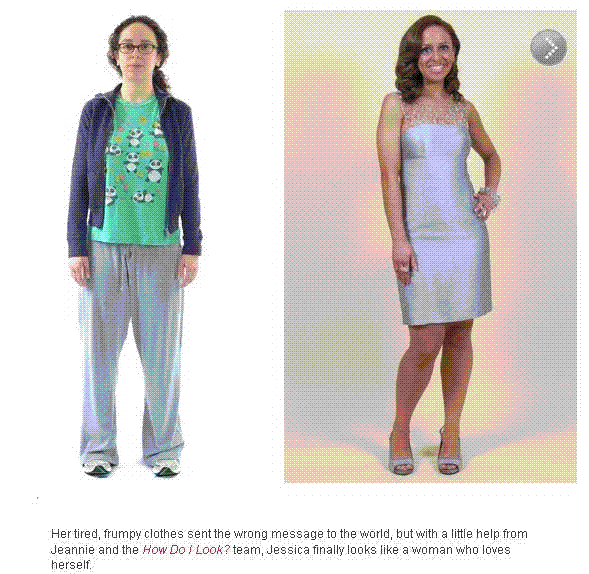
Clothing, personal effects, and intentional body modifications
Clothing, including headgear and footwear; some clothes alter or mold the shape of the body (e.g. corset, support pantyhose, bra). As for footwear, high heels make a person look taller.
Style and colour of haircut (see also mohawk, dreadlocks, braids, ponytail, wig, hairpin, facial hair, beard and moustache)
Cosmetics, stage makeup, body paintings, permanent makeup
Body modifications, such as body piercings, tattoos, scarification plastic surgery
Decorative objects (jewelry) such as a necklaces, bracelets, rings, earrings
Medical or body shape altering devices (e.g. tooth braces, bandages, casts, hearing aids, cervical collar, crutches, contact lenses of different colours, glasses, gold teeth)
EVALUATION:
What are the materials that enhance physical appearance?
What materials thwart the physical appearance?
ASSIGNMENT: Discuss the effects of wearing headphones for a long time.
further studies
http://www.infobarrel.com/The_Character ... e_or_Looks
http://www.beautyofbeauty.com/physicalapperance.htm
LESSON 3
SPECIFIC TOPIC: IMPORTANCE OF PHYSICAL APPEARANCE (cont.)
OBJECTIVES: At the end of the lesson, the students should be able to:
(i)Mention the importance of physical appearance
CONTENT:
IMPORTANCE OF PHYSICAL APPEARANCE (cont.)
People nowadays put a lot of efforts to make themselves become more beautiful in order to develop their self-confidence. As we can see that joining a gym or fitness centre, going to a beauty salon, or even
putting themselves under the knife of cosmetic surgeons become more and more prevalent recently.
However, why do people always focus on and take extra care of their physical appearance?
Firstly, people are often influenced by the media. Many advertisements use attractive celebrities to publicize
and promote their products. The advertisements usually use a super model who has a slim body shape, big round eyes and perfect white skin to show what beauty is and how superior they are. They want to build up an image of success through an attractive appearance and try to distribute the concept of beauty to the people.
Secondly, people are always affected by the peers and the people surrounding. They think that having an attractive appearance is everything. They may misconceive that the more the attractive appearance, the more the benefits and welcomes they can achieve from peers and other people. Therefore, sometimes when they feel unsuccessful and desperate, they would impute it to their appearance or when they are repelled by others, they would blame for their ugly look. On the other hand, attractive physical appearance can build up one's self-confidence and self-esteem.
They will have a very high and positive self-evaluation towards themselves as they think they are more appeal and supreme among the others. It eventually builds up their confidence and beliefs in doing things successfully and favourably in their life. Thus, there is no wonder why so many people strive for a beautiful look and take extra care of their physical appearance while those who have a very low self-image will try their best to alter or enhance it.
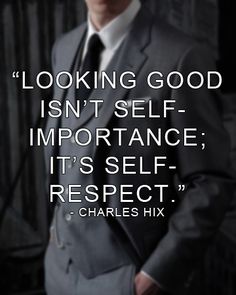
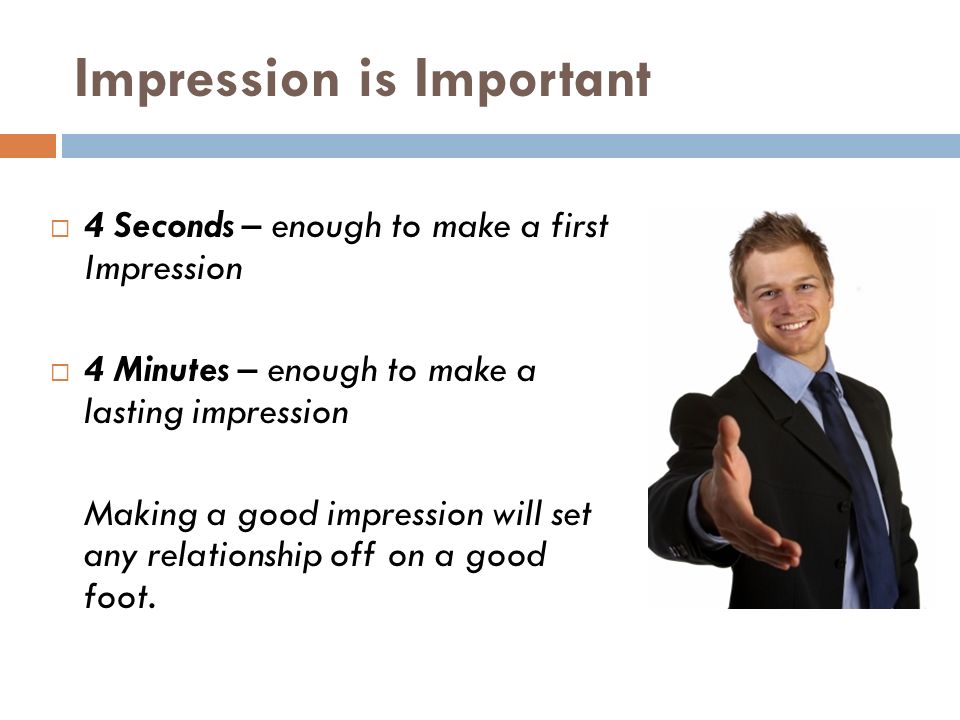
http://content.wisestep.com/how-importa ... best-tips/
EVALUATION:
What is the importance of physical appearance?
ASSIGNMENT: A man is addressed the way he is dressed. Discuss
further studies
http://www.paggu.com/getting-into-roots ... important/
http://www.sciencekids.co.nz/sciencefac ... nbody.html
practice test
http://www.quibblo.com/quiz/9CXX8ty/Hum ... and-Truths
http://www.funtrivia.com/newflash/trivia.cfm?qid=165098
http://www.funtrivia.com/playquiz/quiz1 ... e82b8.html
LESSON 4
TOPIC: Changes in living things (Growth and Development revision)
CONTENT: 1. Definition of growth and development
2. Growth and developmental changes (Childhood and infancy, adolescence,
adulthood
3. Characteristic features of stages of development
4. Classifying growth and developmental changes(Temporary and permanent changes).
Definition of growth and development
Growth is the permanent increase in size of an organism due to increase in number of cells. Growth is brought about by cell division and depends on the type of food taken.
Development is a series of orderly changes by which a living thing comes into maturity .It is a series of changes that occur during growth .It is a gradual process leading to maturation of organs and behaviours of individual like social, emotional as well as skill acquisition.
Growth and developmental changes
The noticeable change in the body size over time is termed growth change. Growth change can be determined by measure of height and weight at time intervals while developmental changes can be observed by appearance of certain characteristics features and capabilities. Development leads to transition from one stage of life to another e.g a baby develops from infancy to childhood, then to adolescence and to adulthood. Developmental changes are progressive and move from simple to complex.
Characteristic features of developmental stages
The developmental changes are characterized by certain features which include the following:
1. Infancy and childhood
Infancy is period of dramatic growth which last from birth to around two years. It is also a time when children form emotional attachments to their care givers e g mother. Childhood is the stage from birth to puberty. After infancy, children can walk, run and speak in simple sentences. Childhood is characterized by light body weight, small size, very rapid growth particularly in the first two years of life very active body and restlessness.
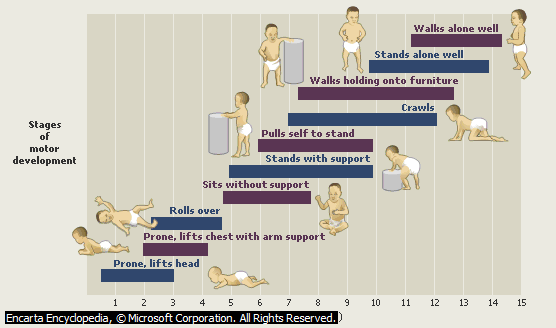
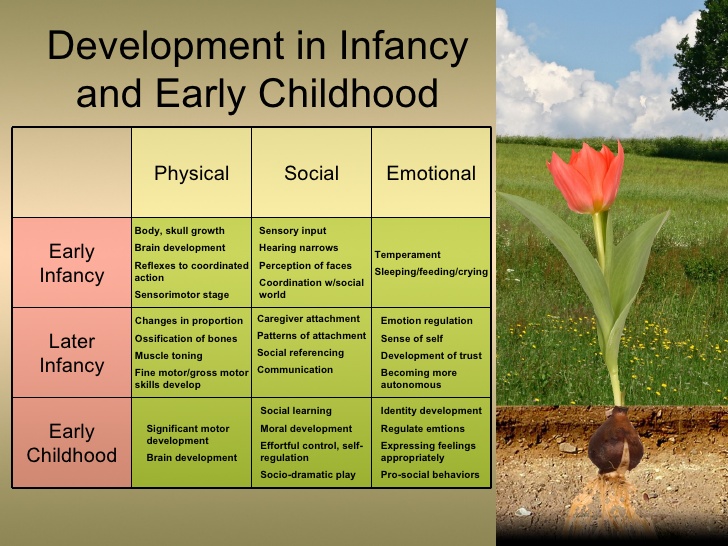
2 Puberty/Juvenile: This is the transition stage from childhood to adolescence. As children approach the ages of 9 and 10 years, they become more independent and might start noticing the physical changes of puberty. A major growth spurt can occur at this time as the body begins sexual development. This also can be a time of stress for children as peer pressure takes its toll. Body image along with emotional changes often causes children to feel less confident. Juveniles also start preparing for middle school by taking on more academic responsibilities and focusing on goal-setting and accomplishment
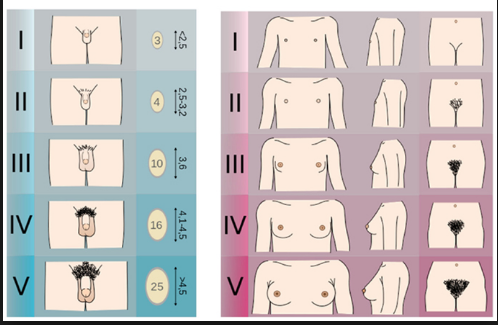
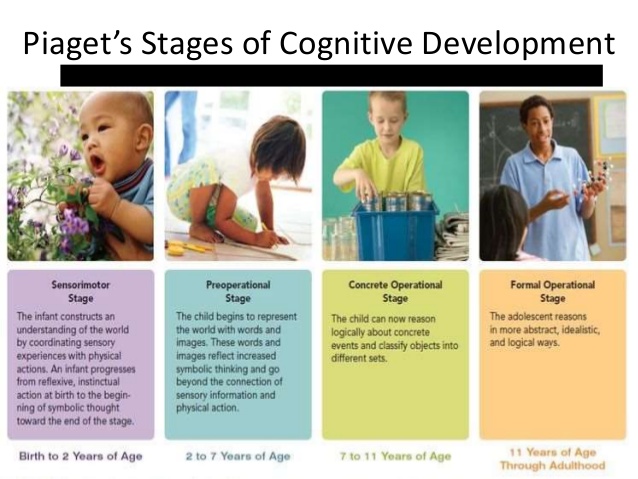
3 Adolescence: This is the stage between adulthood. From ages 12 to 18 years, children experience distinct mental and physical changes. According to the National Institutes of Health (NIH), the beginning of a girl's menstrual cycle typically occurs 2 years after the onset of puberty. The NIH reports that boys do not begin puberty with a distinct marker and tend to mature with adult genitalia about age 16 or 17 years. During this time of physical change, adolescents may become more self-centered. In middle to late adolescence, teen-agers are often characterized as becoming more comfortable with their body sexually and ready to have romantic friendships. Adolescent behavior often includes the teen-agers' need to pull away from parents and authority figures to establish their own self-identity and make decisions on their own.
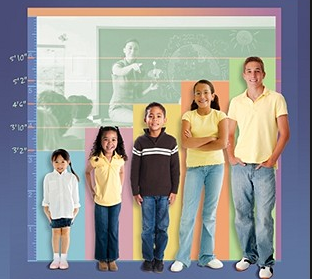
4 Adulthood: This is the stage of full maturity. It is often noted when a person is considered chronologically, legally and behaviorally ready to hold responsibilities such as operating a motor vehicle, voting, taking the vows of marriage, entering into a contract and serving in the armed forces. The process of becoming mature does not end with adolescence but continues throughout adulthood as psychological, safety and self-actualization needs are met. Adulthood is often divided into three categories: young adulthood, middle age and old age.
Classifying growth and developmental changes (Temporary and permanent changes)
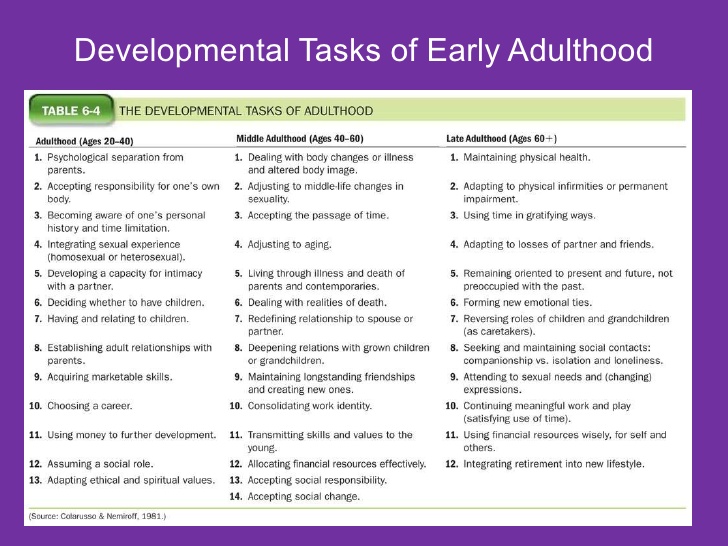
Temporary changes:
These include growth of pimples in male and female at adolescence, malnutrition or kwashiorkor, fatness, enlargement of stomach after a meal or intake of water. These changes are usually due to food in-take. Other temporary changes are bedwetting, sweating and rise in body temperature .Temporary changes may naturally disappear after some time .They can also be corrected medically or by change in behavior
Permanent changes: These are changes that remain for life and are not reversible. Features that associated with each of the human developmental stages of childhood, adolescence and adulthood are permanent changes and remain with the individual throughout life.
Factors affecting growth and development
i. Food
ii. Heredity
iii. Exercise and rest
iv. Gland
v. Love and care
vi. Diseases.
EVALUATION:
Define growth and development.
List the human developmental stages.
List the factors affecting growth and development.
ASSIGNMENT: In STAN JSS 2 text book, write short notes on the factors affecting growth and development.
TOPIC: Physical Appearance
SPECIFIC TOPIC: Physical Features
OBJECTIVES: At the end of the lesson, the students should be able to:
(i )define physical appearance
(ii)mention the factors affecting the variations in human physical appearance
CONTENT:
PHYSICAL APPEARANCE
Physical appearance is simply defined as human looks. Your dressing from the head to your shoes.

FACTORS AFFECTING PHYSICAL APPEARANCE
Physiological differences in human physical appearance vary from individual to individual and these factors are:
Genetic, racial, ethnic affiliation,
Height, body weight, skin tone, body hair, sexual organs, moles, birthmarks, freckles, hair colour, hair texture, eye colour, eye shape, nose shape, ears shape, body shape
Body deformations, mutilations and other variations such as amputations, scars, burns and wounds.

EVALUATION:
What is physical appearance?
What are the factors affecting variations in human physical appearance?
ASSIGNMENT: Mention five ways of improving your physical appearance
further studies
http://wiki.guildwars2.com/wiki/Physica ... ance/Human
LESSON 2
SPECIFIC TOPIC: VARIATIONS IN PHYSICAL APPEARANCE
OBJECTIVES: At the end of the lesson, the students should be able to:
(i)mention materials that enhance the physical appearance
(ii)Mention materials that thwart the physical appearance
CONTENT: VARIATIONS IN PHYSICAL APPEARANCE
Variations in the physical appearance of humans, known as human looks, are believed by anthropologists to be an important factor in the development of personality and social relations, in particular, physical attractiveness. Humans are acutely sensitive to variations in physical appearance, some theorize for reasons of evolution. Some differences in human appearance are genetic, others are the result of age or disease, and many are the result of personal adornment.
medical or body shape altering devices (e.g. tooth braces, bandages, casts, hearing aids, cervical collar, crutches, contact lenses of different colours, glasses, gold teeth) Some people have traditionally linked some differences in personal appearance such as skeletal shape with race, such as prognathism or elongated stride. Different cultures place different degrees of emphasis on physical appearance and its importance to social status and other phenomena.


Clothing, personal effects, and intentional body modifications
Clothing, including headgear and footwear; some clothes alter or mold the shape of the body (e.g. corset, support pantyhose, bra). As for footwear, high heels make a person look taller.
Style and colour of haircut (see also mohawk, dreadlocks, braids, ponytail, wig, hairpin, facial hair, beard and moustache)
Cosmetics, stage makeup, body paintings, permanent makeup
Body modifications, such as body piercings, tattoos, scarification plastic surgery
Decorative objects (jewelry) such as a necklaces, bracelets, rings, earrings
Medical or body shape altering devices (e.g. tooth braces, bandages, casts, hearing aids, cervical collar, crutches, contact lenses of different colours, glasses, gold teeth)
EVALUATION:
What are the materials that enhance physical appearance?
What materials thwart the physical appearance?
ASSIGNMENT: Discuss the effects of wearing headphones for a long time.
further studies
http://www.infobarrel.com/The_Character ... e_or_Looks
http://www.beautyofbeauty.com/physicalapperance.htm
LESSON 3
SPECIFIC TOPIC: IMPORTANCE OF PHYSICAL APPEARANCE (cont.)
OBJECTIVES: At the end of the lesson, the students should be able to:
(i)Mention the importance of physical appearance
CONTENT:
IMPORTANCE OF PHYSICAL APPEARANCE (cont.)
People nowadays put a lot of efforts to make themselves become more beautiful in order to develop their self-confidence. As we can see that joining a gym or fitness centre, going to a beauty salon, or even
putting themselves under the knife of cosmetic surgeons become more and more prevalent recently.
However, why do people always focus on and take extra care of their physical appearance?
Firstly, people are often influenced by the media. Many advertisements use attractive celebrities to publicize
and promote their products. The advertisements usually use a super model who has a slim body shape, big round eyes and perfect white skin to show what beauty is and how superior they are. They want to build up an image of success through an attractive appearance and try to distribute the concept of beauty to the people.
Secondly, people are always affected by the peers and the people surrounding. They think that having an attractive appearance is everything. They may misconceive that the more the attractive appearance, the more the benefits and welcomes they can achieve from peers and other people. Therefore, sometimes when they feel unsuccessful and desperate, they would impute it to their appearance or when they are repelled by others, they would blame for their ugly look. On the other hand, attractive physical appearance can build up one's self-confidence and self-esteem.
They will have a very high and positive self-evaluation towards themselves as they think they are more appeal and supreme among the others. It eventually builds up their confidence and beliefs in doing things successfully and favourably in their life. Thus, there is no wonder why so many people strive for a beautiful look and take extra care of their physical appearance while those who have a very low self-image will try their best to alter or enhance it.


http://content.wisestep.com/how-importa ... best-tips/
EVALUATION:
What is the importance of physical appearance?
ASSIGNMENT: A man is addressed the way he is dressed. Discuss
further studies
http://www.paggu.com/getting-into-roots ... important/
http://www.sciencekids.co.nz/sciencefac ... nbody.html
practice test
http://www.quibblo.com/quiz/9CXX8ty/Hum ... and-Truths
http://www.funtrivia.com/newflash/trivia.cfm?qid=165098
http://www.funtrivia.com/playquiz/quiz1 ... e82b8.html
LESSON 4
TOPIC: Changes in living things (Growth and Development revision)
CONTENT: 1. Definition of growth and development
2. Growth and developmental changes (Childhood and infancy, adolescence,
adulthood
3. Characteristic features of stages of development
4. Classifying growth and developmental changes(Temporary and permanent changes).
Definition of growth and development
Growth is the permanent increase in size of an organism due to increase in number of cells. Growth is brought about by cell division and depends on the type of food taken.
Development is a series of orderly changes by which a living thing comes into maturity .It is a series of changes that occur during growth .It is a gradual process leading to maturation of organs and behaviours of individual like social, emotional as well as skill acquisition.
Growth and developmental changes
The noticeable change in the body size over time is termed growth change. Growth change can be determined by measure of height and weight at time intervals while developmental changes can be observed by appearance of certain characteristics features and capabilities. Development leads to transition from one stage of life to another e.g a baby develops from infancy to childhood, then to adolescence and to adulthood. Developmental changes are progressive and move from simple to complex.
Characteristic features of developmental stages
The developmental changes are characterized by certain features which include the following:
1. Infancy and childhood
Infancy is period of dramatic growth which last from birth to around two years. It is also a time when children form emotional attachments to their care givers e g mother. Childhood is the stage from birth to puberty. After infancy, children can walk, run and speak in simple sentences. Childhood is characterized by light body weight, small size, very rapid growth particularly in the first two years of life very active body and restlessness.


2 Puberty/Juvenile: This is the transition stage from childhood to adolescence. As children approach the ages of 9 and 10 years, they become more independent and might start noticing the physical changes of puberty. A major growth spurt can occur at this time as the body begins sexual development. This also can be a time of stress for children as peer pressure takes its toll. Body image along with emotional changes often causes children to feel less confident. Juveniles also start preparing for middle school by taking on more academic responsibilities and focusing on goal-setting and accomplishment


3 Adolescence: This is the stage between adulthood. From ages 12 to 18 years, children experience distinct mental and physical changes. According to the National Institutes of Health (NIH), the beginning of a girl's menstrual cycle typically occurs 2 years after the onset of puberty. The NIH reports that boys do not begin puberty with a distinct marker and tend to mature with adult genitalia about age 16 or 17 years. During this time of physical change, adolescents may become more self-centered. In middle to late adolescence, teen-agers are often characterized as becoming more comfortable with their body sexually and ready to have romantic friendships. Adolescent behavior often includes the teen-agers' need to pull away from parents and authority figures to establish their own self-identity and make decisions on their own.

4 Adulthood: This is the stage of full maturity. It is often noted when a person is considered chronologically, legally and behaviorally ready to hold responsibilities such as operating a motor vehicle, voting, taking the vows of marriage, entering into a contract and serving in the armed forces. The process of becoming mature does not end with adolescence but continues throughout adulthood as psychological, safety and self-actualization needs are met. Adulthood is often divided into three categories: young adulthood, middle age and old age.
Classifying growth and developmental changes (Temporary and permanent changes)

Temporary changes:
These include growth of pimples in male and female at adolescence, malnutrition or kwashiorkor, fatness, enlargement of stomach after a meal or intake of water. These changes are usually due to food in-take. Other temporary changes are bedwetting, sweating and rise in body temperature .Temporary changes may naturally disappear after some time .They can also be corrected medically or by change in behavior
Permanent changes: These are changes that remain for life and are not reversible. Features that associated with each of the human developmental stages of childhood, adolescence and adulthood are permanent changes and remain with the individual throughout life.
Factors affecting growth and development
i. Food
ii. Heredity
iii. Exercise and rest
iv. Gland
v. Love and care
vi. Diseases.
EVALUATION:
Define growth and development.
List the human developmental stages.
List the factors affecting growth and development.
ASSIGNMENT: In STAN JSS 2 text book, write short notes on the factors affecting growth and development.
WEEK 2
LESSON 5
TOPIC: Changes in non-living things
CONTENTS: Types of changes in non-living things (Physical and chemical changes
Characteristics of physical and chemical changes.
Types of changes in non living things
Non-living matter undergo changes i.e they can be made to change from one state to another. They can be made to form new substances.
I. Physical changes
II. Chemical changes
Physical changes: These are changes in which no new substances are formed. A physical change is a temporary change. It is reversible .The composition of the new substance does not change when undergoing a physical change. Examples are:
1. Melting of candle wax.
2. Dissolution of salt in water to form a salt solution.
Salt + water ____________ salt solution

3 All changes of state of matter are physical changes.
i vaporization of liquid to gases
Ii.Melting of solids to liquids e.g ice to water
iii. Liquefaction of gases to liquids e.g cooking gas is liquefied under pressure.
Iv . Sublimation of solids to vapours
V All processes of separation of mixture are physical changes e.g distillation
Vi. Magnetization and demagnetization of iron.
Chemical changes:
These are changes in which new substances are formed. t is a permanent change and not easily reversible. The composition of a substance changes during the process of chemical change. Examples of chemical changes are:
1. Burning of substance in air e.g burning of paper or wood.
2. The rusting of iron.
3. Dissolution of metals in or limestone in acids.
E.g. Zn + H2SO4------------ ZnSO4 +H2
4. All processes of fermentation and decaying of substances are chemical changes
5. The addition of water to calcium oxide
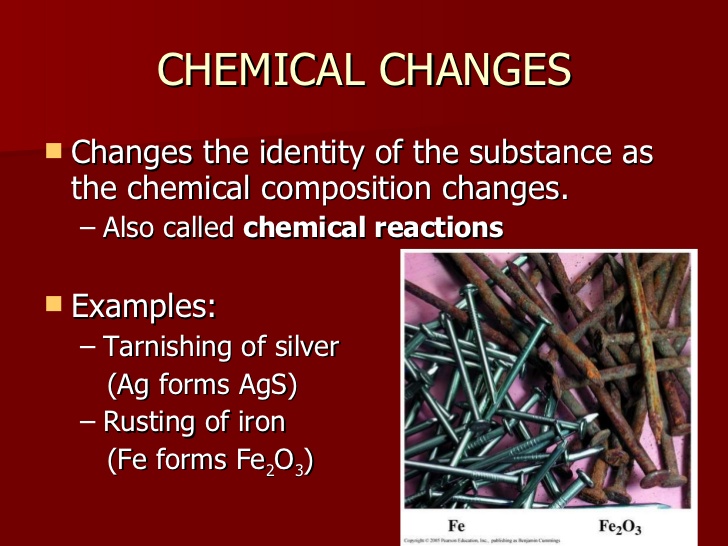
Characteristics of physical and chemical changes

EVALUATION:
1. Explain the following: i. physical change ii. Chemical change.
2. Differentiate between physical change and chemical change.
ASSIGNMENT:
Read STAN Basic Science J S S 2, Chapter 7 ,pages 37-41.
TOPIC: Changes in non-living things
CONTENTS: Types of changes in non-living things (Physical and chemical changes
Characteristics of physical and chemical changes.
Types of changes in non living things
Non-living matter undergo changes i.e they can be made to change from one state to another. They can be made to form new substances.
I. Physical changes
II. Chemical changes
Physical changes: These are changes in which no new substances are formed. A physical change is a temporary change. It is reversible .The composition of the new substance does not change when undergoing a physical change. Examples are:
1. Melting of candle wax.
2. Dissolution of salt in water to form a salt solution.
Salt + water ____________ salt solution

3 All changes of state of matter are physical changes.
i vaporization of liquid to gases
Ii.Melting of solids to liquids e.g ice to water
iii. Liquefaction of gases to liquids e.g cooking gas is liquefied under pressure.
Iv . Sublimation of solids to vapours
V All processes of separation of mixture are physical changes e.g distillation
Vi. Magnetization and demagnetization of iron.
Chemical changes:
These are changes in which new substances are formed. t is a permanent change and not easily reversible. The composition of a substance changes during the process of chemical change. Examples of chemical changes are:
1. Burning of substance in air e.g burning of paper or wood.
2. The rusting of iron.
3. Dissolution of metals in or limestone in acids.
E.g. Zn + H2SO4------------ ZnSO4 +H2
4. All processes of fermentation and decaying of substances are chemical changes
5. The addition of water to calcium oxide

Characteristics of physical and chemical changes

EVALUATION:
1. Explain the following: i. physical change ii. Chemical change.
2. Differentiate between physical change and chemical change.
ASSIGNMENT:
Read STAN Basic Science J S S 2, Chapter 7 ,pages 37-41.
WEEK 3
LESSON 6
TOPIC: Elements, mixtures and compounds
SPECIFIC TOPIC: Methods of separation of mixtures
REFERENCE BOOKS: Integrated science for JSCE by Adebayo et al
Essential chemistry for SSS by I.A.Odesina
OBJECTIVES: At the end of the lesson, the students should be able to:
(i )define element
(ii)define mixtures
(iii)define compound
(iv) mention the methods of separating mixtures
CONTENT:
ELEMENTS, MIXTURES AND COMPOUNDS
An element is a substance that is made up of one kind of particle called atoms and cannot split into two or simpler units or substances by an ordinary chemical process. Examples are gold, iron, hydrogen, carbon, oxygen, silver, neon etc. There are about 110 known elements.

A mixture contains two or more constituents which can be easily separated by physical methods. The constituents of a mixture can be elements or compounds or even both. Examples of mixtures are air, blood, urine, milk, soil, sea-water, crude oil, brass.

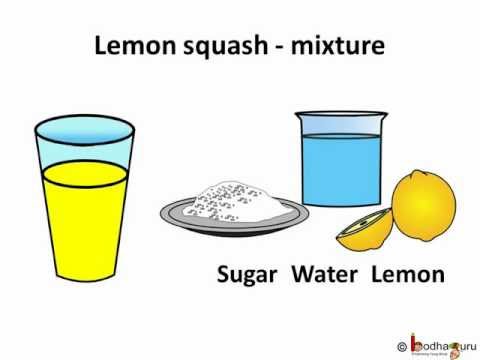
A compound is a substance which contains two or more elements chemically combined together in a chemical reaction. Two compounds can also react together to form a new compound. Examples of compounds are common salt, soap, water, sand, limestone, sugar (sucrose) etc.
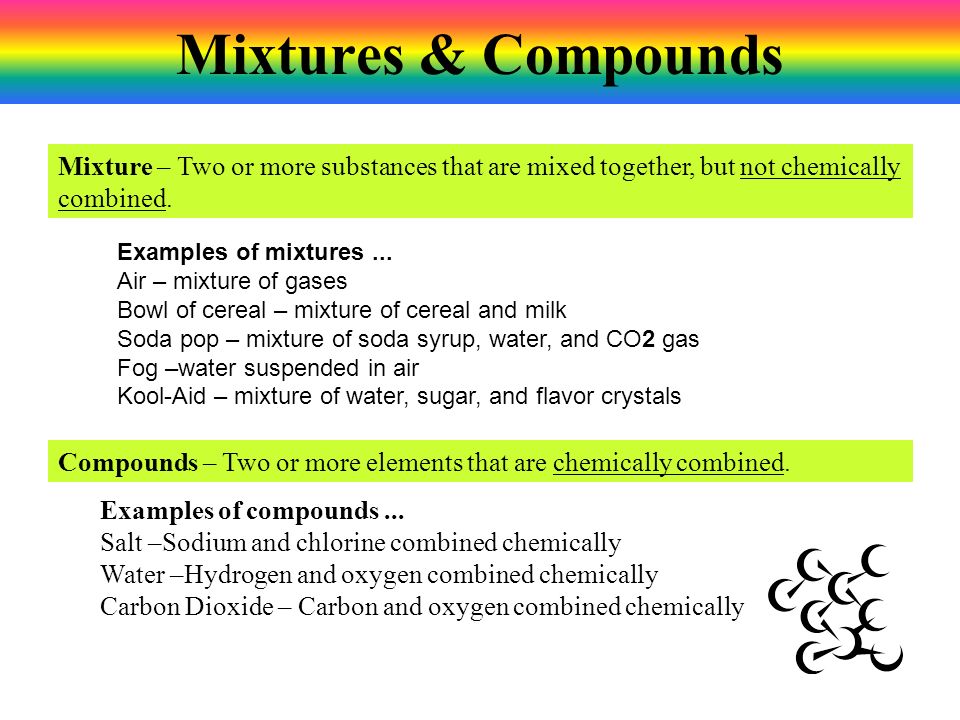

METHODS OF SEPARATION OF MIXTURES
A mixture contains two or more different substances which retain their individual characteristics and can be separated by the following methods:
Decantation
Filtration
Evaporation
Distillation
Fractional distillation
Magnetic separation
Sublimation
Sieving
Crystallization
Chromatography


https://youtu.be/4DAxYArKOOA
EVALUATION:
What is an Element?
What is a mixture?
What is a compound?
What are the methods of separating mixtures?
ASSIGNMENT: Give five examples of compounds and their names
further studies
http://www.chem4kids.com/files/matter_mixture.html
practice test
http://www.softschools.com/quizzes/chem ... iz334.html
LESSON 7
SPECIFIC TOPIC: Extraction of salt from sea water
OBJECTIVES: At the end of the lesson, the students should be able to:
(i)describe how salt can be extracted from the sea water
CONTENT:
EXTRACTION OF SALT FROM SEA WATER
Salt can be separated from the sea water by heating the sea water to dryness so that the liquid portion with a lower vapour pressure than the solid is removed from the solid portion. The method employs the principle of different vapour pressures and the solvent is sacrificed in the process. The sea water is poured into an evaporating dish and heated gently over a steam bath, the water is driven off and the salt left behind in the dish. The wet salt can be obtained dry by putting it in an oven or the sun or the desiccators.
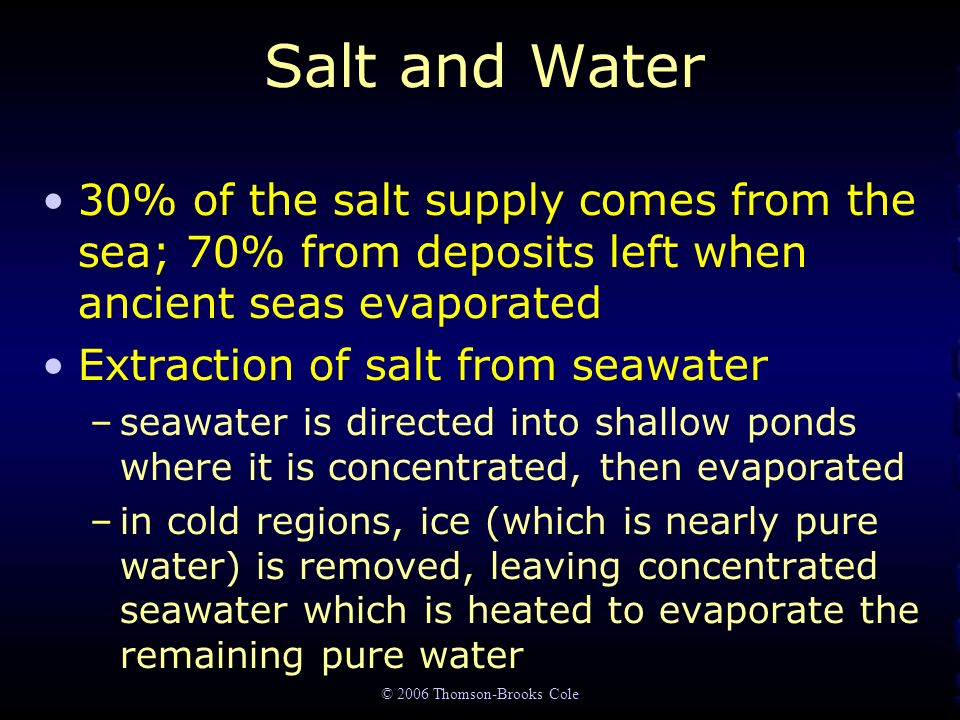
EVALUATION:
How can salt be recovered from the sea water?
CLASS WORK: mention five uses of salt
https://youtu.be/qynBiW21gxQ
LESSON 8
SPECIFIC TOPIC: Crude oil and Petrochemicals
OBJECTIVES: At the end of the lesson, the students should be able to:
(i)describe crude oil
(ii)define petrochemicals
(iii)give examples of petrochemicals
(iv)mention the main operations of refining crude oil
(v)outline the uses of crude oil
CONTENT:
CRUDE OIL AND PETROCHEMICALS
Crude oil (petroleum) is the principal source of hydrocarbons which is formed in the rocks of the earth's crust from the remains of marine animals and plants. It is a dark, viscous liquid found in huge underground deposits in Nigeria, Saudi Arabia, Canada, Venezuela, Australia, Indonesia and Russia.
Petrochemicals are substances that are manufactured from the by-products of petroleum. These include plastics, synthetic fibres (nylon and dacron), synthetic rubber, insecticides and detergents.
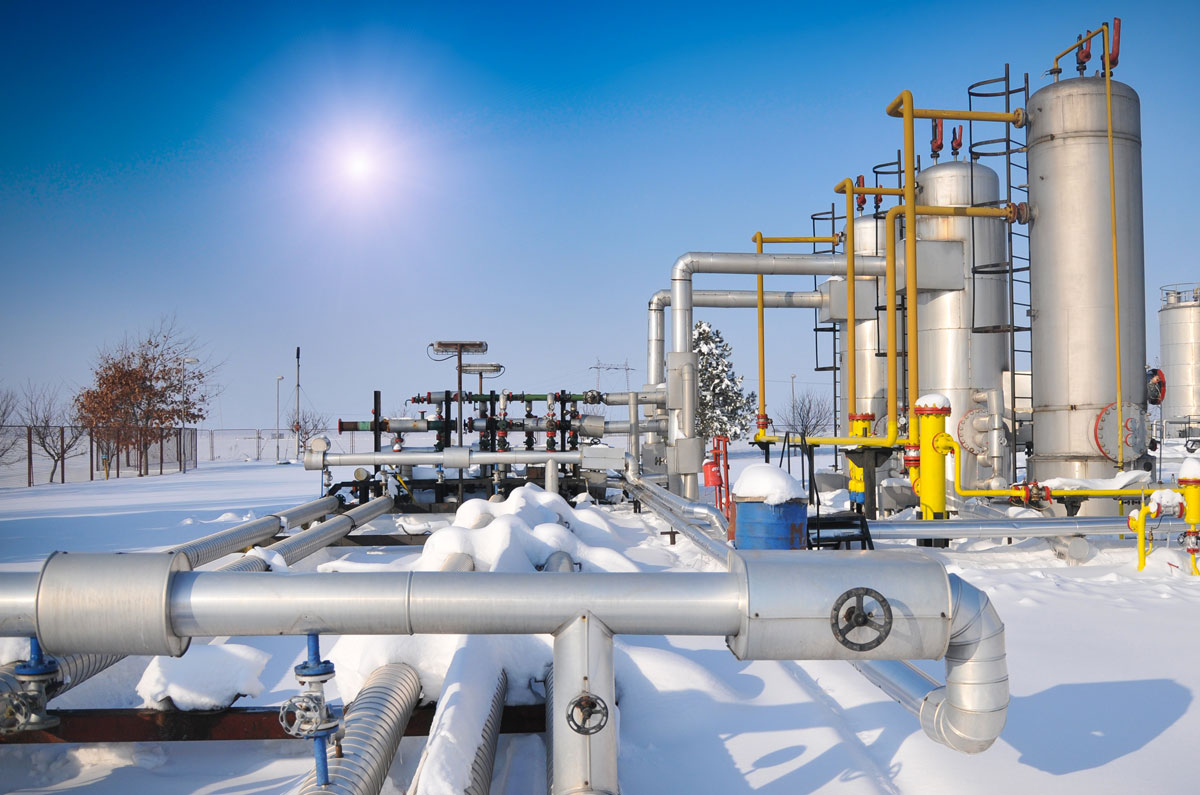
REFINING OF CRUDE OIL
The main operations of refining crude petroleum oil are:
Separation: each fraction contains several compounds which fall within a certain boiling point range. These fractions can be differentiated from one another by their different volatility, odour, colour, texture and their relative ease of ignition and burning.
Purification
Conversion.

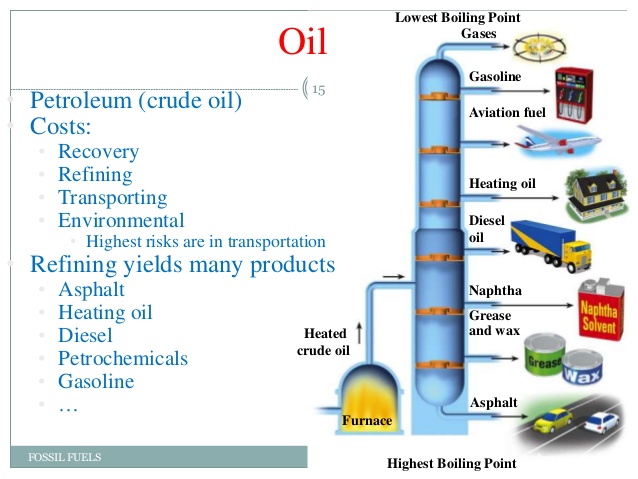
USES OF CRUDE OIL
1. Petroleum gas is used as a major source of fuel
2. Petrol or Gasoline is also a source of fuel
3. Kerosene is used in modern jet engines, aeroplanes and tractors
4. Diesel oil and Gas oil are used mainly as fuels for heating, in diesel engines and as raw materials for the cracking process
5. Lubricating oils and Paraffin wax are viscous liquids used for lubricating moving parts of engines and machines. Grease, Vaseline is used in cosmetic formulations while paraffin wax is used in making candles, water proof materials, polish, ointments and creams.
6. Bitumen is used in paving roads and airfields. It may also be used as a protective paint, in pipe coating and water proofing roofs.
EVALUATION:
What is crude oil?
What are Petrochemicals?
What are the examples of Petrochemicals?
What are the main operations of crude oil?
What are the uses of crude oil?
ASSIGNMENT: What are the importance of crude oil to Nigeria?
further studies
http://www.sciencekids.co.nz/sciencefac ... y/oil.html
http://science.howstuffworks.com/enviro ... ining2.htm
TOPIC: Elements, mixtures and compounds
SPECIFIC TOPIC: Methods of separation of mixtures
REFERENCE BOOKS: Integrated science for JSCE by Adebayo et al
Essential chemistry for SSS by I.A.Odesina
OBJECTIVES: At the end of the lesson, the students should be able to:
(i )define element
(ii)define mixtures
(iii)define compound
(iv) mention the methods of separating mixtures
CONTENT:
ELEMENTS, MIXTURES AND COMPOUNDS
An element is a substance that is made up of one kind of particle called atoms and cannot split into two or simpler units or substances by an ordinary chemical process. Examples are gold, iron, hydrogen, carbon, oxygen, silver, neon etc. There are about 110 known elements.

A mixture contains two or more constituents which can be easily separated by physical methods. The constituents of a mixture can be elements or compounds or even both. Examples of mixtures are air, blood, urine, milk, soil, sea-water, crude oil, brass.


A compound is a substance which contains two or more elements chemically combined together in a chemical reaction. Two compounds can also react together to form a new compound. Examples of compounds are common salt, soap, water, sand, limestone, sugar (sucrose) etc.


METHODS OF SEPARATION OF MIXTURES
A mixture contains two or more different substances which retain their individual characteristics and can be separated by the following methods:
Decantation
Filtration
Evaporation
Distillation
Fractional distillation
Magnetic separation
Sublimation
Sieving
Crystallization
Chromatography


https://youtu.be/4DAxYArKOOA
EVALUATION:
What is an Element?
What is a mixture?
What is a compound?
What are the methods of separating mixtures?
ASSIGNMENT: Give five examples of compounds and their names
further studies
http://www.chem4kids.com/files/matter_mixture.html
practice test
http://www.softschools.com/quizzes/chem ... iz334.html
LESSON 7
SPECIFIC TOPIC: Extraction of salt from sea water
OBJECTIVES: At the end of the lesson, the students should be able to:
(i)describe how salt can be extracted from the sea water
CONTENT:
EXTRACTION OF SALT FROM SEA WATER
Salt can be separated from the sea water by heating the sea water to dryness so that the liquid portion with a lower vapour pressure than the solid is removed from the solid portion. The method employs the principle of different vapour pressures and the solvent is sacrificed in the process. The sea water is poured into an evaporating dish and heated gently over a steam bath, the water is driven off and the salt left behind in the dish. The wet salt can be obtained dry by putting it in an oven or the sun or the desiccators.

EVALUATION:
How can salt be recovered from the sea water?
CLASS WORK: mention five uses of salt
https://youtu.be/qynBiW21gxQ
LESSON 8
SPECIFIC TOPIC: Crude oil and Petrochemicals
OBJECTIVES: At the end of the lesson, the students should be able to:
(i)describe crude oil
(ii)define petrochemicals
(iii)give examples of petrochemicals
(iv)mention the main operations of refining crude oil
(v)outline the uses of crude oil
CONTENT:
CRUDE OIL AND PETROCHEMICALS
Crude oil (petroleum) is the principal source of hydrocarbons which is formed in the rocks of the earth's crust from the remains of marine animals and plants. It is a dark, viscous liquid found in huge underground deposits in Nigeria, Saudi Arabia, Canada, Venezuela, Australia, Indonesia and Russia.
Petrochemicals are substances that are manufactured from the by-products of petroleum. These include plastics, synthetic fibres (nylon and dacron), synthetic rubber, insecticides and detergents.

REFINING OF CRUDE OIL
The main operations of refining crude petroleum oil are:
Separation: each fraction contains several compounds which fall within a certain boiling point range. These fractions can be differentiated from one another by their different volatility, odour, colour, texture and their relative ease of ignition and burning.
Purification
Conversion.


USES OF CRUDE OIL
1. Petroleum gas is used as a major source of fuel
2. Petrol or Gasoline is also a source of fuel
3. Kerosene is used in modern jet engines, aeroplanes and tractors
4. Diesel oil and Gas oil are used mainly as fuels for heating, in diesel engines and as raw materials for the cracking process
5. Lubricating oils and Paraffin wax are viscous liquids used for lubricating moving parts of engines and machines. Grease, Vaseline is used in cosmetic formulations while paraffin wax is used in making candles, water proof materials, polish, ointments and creams.
6. Bitumen is used in paving roads and airfields. It may also be used as a protective paint, in pipe coating and water proofing roofs.
EVALUATION:
What is crude oil?
What are Petrochemicals?
What are the examples of Petrochemicals?
What are the main operations of crude oil?
What are the uses of crude oil?
ASSIGNMENT: What are the importance of crude oil to Nigeria?
further studies
http://www.sciencekids.co.nz/sciencefac ... y/oil.html
http://science.howstuffworks.com/enviro ... ining2.htm
WEEK 4
LESSON 9
TOPIC: The human body (Skeletal system and Movement)
CONTENT:1. Human skeleton
2. Functions of the skeleton
3. Parts of the body responsible for movement e.g
4. Bones, muscles and joints.
5. Importance of movement to human beings:
Human skeleton
Bones are of hard chemical materials called Calcium (II)Tetraoxophosphate (IV), Calcium (II) Trioxocarbonate(IV).These are living cells that can grow.
The parts of the body responsible for movement are bones, joints and muscles. Human body is built on supporting framework of bones called Skeleton. Skeletons are bony structures, which give animals rigidity, support and also protect delicate organs of the body.
Human skeletal system
Skeleton could be divided into two main groups:
1 Axial skeleton
2 Appendicular skeleton
1 Axial skeleton
This consists of the skull, the vertebral column or back bones and the rib cage.There are up to 80 bones
of axial skeleton.
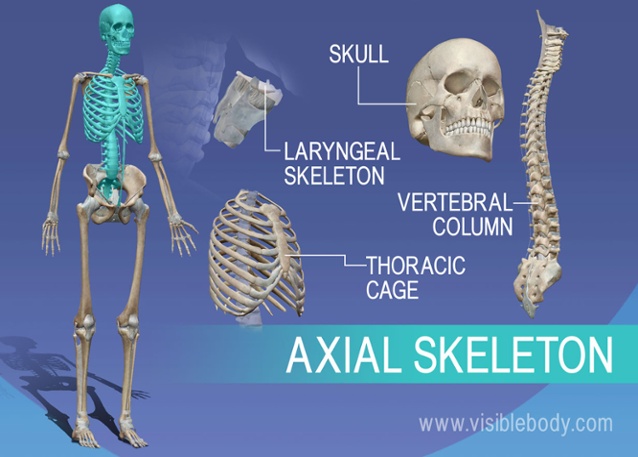
2 Appendicular skeleton. This consists of the bones of the limbs and limb girdles. The limbs are the fore limbs (arms) and the hind limbs (legs and feet).The girdles are the pectoral (shoulder) and the pelvic girdles (hip).The appendicular skeleton has up to 126 bones.
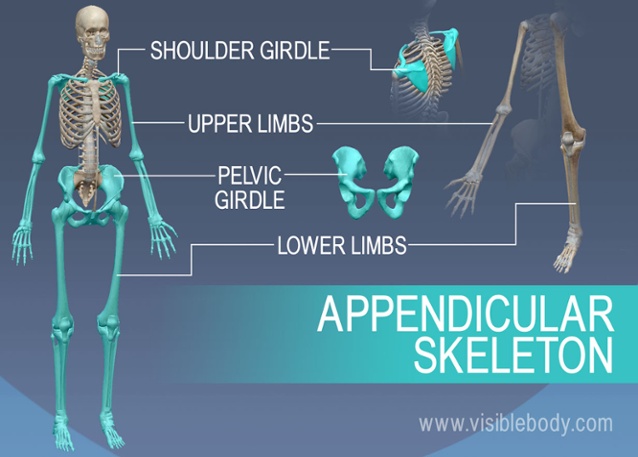
Functions of the skeleton
1 It provides support for the body.
2 it protects vital organs.
3 It gives shape to the body.
4 It provides surface for attachment of muscles for movement
5 Red blood cells are formed in the bone marrow.
6 Bones store salt (calcium and phosphorus).
Muscles and Joints
Muscles are bundles of elastic substance in an animal body. Muscles are attached to bones by means of tendons. Muscles are made up of many tiny cells, which are held together by thin strands of connective tissues .A tight cord which holds bones together is called ligament. A flexible connective tissue which is found between one vertebra and the other is called Cartilage. It serves as shock absorber which prevents the bones from wearing out.
Types of muscles
1 Skeletal muscle: These attached to the bones of the skeleton which help to move.
2 Smooth muscles: These lined many structures in our body such as intestine and blood vessels.
3 Cardiac muscles: Are special striped muscles with the ability to work continuously.

Joints
The point where two bones meet is called a joint. The bones are actually held together by rope-like materials called ligament.
Types of joints
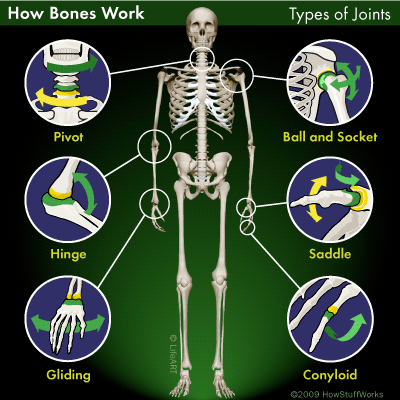
1 Ball and socket joints: These allow free rotation of the bones e.g the hip bones.
2 Pivot joint: This is found only in the neck bone. It allows the rotation of the head on the neck. It also permits nodding and limited bending movements.
3 Hinge joint: This allows movement in one direction only e.g elbow joint.
4 Gliding /sliding joint: This allows the sliding, twisting or turning of one bone over another e.g joints at the wrist, ankle joint.
5 Suture joint: This is found in the skull.
Importance of movement to human beings
Human beings move in order to
1 Look for food
2 For reproduction/sexual partner
3 To run away from danger.
4 To look for shelter and safety.
5 To respond to environment.
6 To celebrate with each other /attend social functions.
7 To practice profession of their choice to earn a living.
8 To keep themselves and their surroundings neat and tidy.
9 To enjoy themselves.
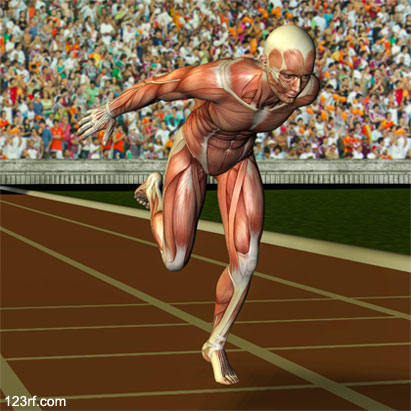
EVALUATION:
1 Mention the importance of movement to human beings.
2 List types of joints and muscles.
3 Explain the following: a Tendon b Cartilage c Ligament.
ASSIGNMENT: Read STAN Basic Science chapter 10, pages 56 -59.
REF. TEXTS:
1 STAN Basic Science Project ,book two
2 Basic Science Made Easy, Book Two
3 Longman Basic Science, Book Two
TOPIC: The human body (Skeletal system and Movement)
CONTENT:1. Human skeleton
2. Functions of the skeleton
3. Parts of the body responsible for movement e.g
4. Bones, muscles and joints.
5. Importance of movement to human beings:
Human skeleton
Bones are of hard chemical materials called Calcium (II)Tetraoxophosphate (IV), Calcium (II) Trioxocarbonate(IV).These are living cells that can grow.
The parts of the body responsible for movement are bones, joints and muscles. Human body is built on supporting framework of bones called Skeleton. Skeletons are bony structures, which give animals rigidity, support and also protect delicate organs of the body.
Human skeletal system
Skeleton could be divided into two main groups:
1 Axial skeleton
2 Appendicular skeleton
1 Axial skeleton
This consists of the skull, the vertebral column or back bones and the rib cage.There are up to 80 bones
of axial skeleton.

2 Appendicular skeleton. This consists of the bones of the limbs and limb girdles. The limbs are the fore limbs (arms) and the hind limbs (legs and feet).The girdles are the pectoral (shoulder) and the pelvic girdles (hip).The appendicular skeleton has up to 126 bones.

Functions of the skeleton
1 It provides support for the body.
2 it protects vital organs.
3 It gives shape to the body.
4 It provides surface for attachment of muscles for movement
5 Red blood cells are formed in the bone marrow.
6 Bones store salt (calcium and phosphorus).
Muscles and Joints
Muscles are bundles of elastic substance in an animal body. Muscles are attached to bones by means of tendons. Muscles are made up of many tiny cells, which are held together by thin strands of connective tissues .A tight cord which holds bones together is called ligament. A flexible connective tissue which is found between one vertebra and the other is called Cartilage. It serves as shock absorber which prevents the bones from wearing out.
Types of muscles
1 Skeletal muscle: These attached to the bones of the skeleton which help to move.
2 Smooth muscles: These lined many structures in our body such as intestine and blood vessels.
3 Cardiac muscles: Are special striped muscles with the ability to work continuously.

Joints
The point where two bones meet is called a joint. The bones are actually held together by rope-like materials called ligament.
Types of joints

1 Ball and socket joints: These allow free rotation of the bones e.g the hip bones.
2 Pivot joint: This is found only in the neck bone. It allows the rotation of the head on the neck. It also permits nodding and limited bending movements.
3 Hinge joint: This allows movement in one direction only e.g elbow joint.
4 Gliding /sliding joint: This allows the sliding, twisting or turning of one bone over another e.g joints at the wrist, ankle joint.
5 Suture joint: This is found in the skull.
Importance of movement to human beings
Human beings move in order to
1 Look for food
2 For reproduction/sexual partner
3 To run away from danger.
4 To look for shelter and safety.
5 To respond to environment.
6 To celebrate with each other /attend social functions.
7 To practice profession of their choice to earn a living.
8 To keep themselves and their surroundings neat and tidy.
9 To enjoy themselves.

EVALUATION:
1 Mention the importance of movement to human beings.
2 List types of joints and muscles.
3 Explain the following: a Tendon b Cartilage c Ligament.
ASSIGNMENT: Read STAN Basic Science chapter 10, pages 56 -59.
REF. TEXTS:
1 STAN Basic Science Project ,book two
2 Basic Science Made Easy, Book Two
3 Longman Basic Science, Book Two
WEEK 5
LESSON 10
TOPIC: Hydrogen
SPECIFIC TOPIC: Preparation and properties of Hydrogen
REFERENCE BOOKS: Basic Science for J.s.s 2 by Ndu et al
Progressive Integrated Science for J.s.s 2 by Danquah
OBJECTIVES: At the end of the lesson, the students should be able to:
(i)describe the preparation of hydrogen in the laboratory
(ii)enumerate the physical properties of hydrogen
(iii)outline the chemical properties of hydrogen
CONTENT:
HYDROGEN
Hydrogen is the lightest element. It is lighter than air.

PREPARATION OF HYDROGEN GAS
Hydrogen gas can be prepared in the laboratory in two ways:
1. By the action of an acid on a reactive metal:
When an acid is poured on an active metal, a salt is formed and hydrogen gas evolved. Neither heat nor catalyst is required. The hydrogen gas is collected by downward displacement of air as shown in the diagram below:
https://youtu.be/9hBCLoWwcWo
2.By reacting steam with magnesium:
Steam is water vapour and water is made up of hydrogen and oxygen atoms. Magnesium is a metal that can react with the oxygen in the steam to from magnesium oxide. The hydrogen in the steam is then collected.
https://youtu.be/fq7gFxw_5ZQ
PROPERTIES OF HYDROGEN
Physical Properties:
1. Hydrogen is a gas at room temperature
2. Hydrogen is colourless, tasteless and odourless
3. It is a neutral gas
Chemical Properties:
1. Hydrogen burns in air with a hot blue flame
2. It explodes when burnt in oxygen giving a pop sound and forming water.
3. It does not support combustion (burning)
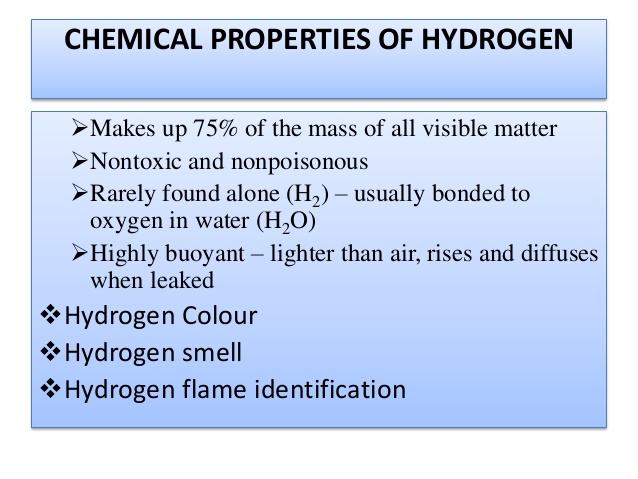
https://youtu.be/zng77uTev2U
EVALUATION:
How is hydrogen prepared in the laboratory?
What are the physical properties of hydrogen?
What are the chemical properties of hydrogen?
ASSIGNMENT: what is the test for hydrogen?
further studies
http://www.sciencekids.co.nz/sciencefac ... rogen.html
practice test
http://www.allthetests.com/quiz21/quiz/ ... -Fuel-Cell
LESSON 11
SPECIFIC TOPIC: Uses of Hydrogen
OBJECTIVES: At the end of the lesson, the students should be able to:
(i)mention the uses of hydrogen
(ii)define rusting and corrosion
(iii)enumerate the conditions for rusting to take place
(iv)mention ways of preventing rusting
CONTENT:
USES OF HYDROGEN
1. Due to its lightness, hydrogen gas is used to fill balloons.
2. Light hydrogen is used as fuel in rocket space.
3. It is used in blow pipes foe welding
4. It is used for making margarine from vegetable oils.
RUSTING IN NATURE
Rusting is defined as the slow oxidation of iron in the presence of water. Rust is hydrated iron (III) oxide. Corrosion is a property of metals that makes them become dulled (less lustrous) when exposed to the atmosphere. The type of corrosion that occurs in iron is called rusting.

CONDITIONS NECESSARY FOR RUSTING1
For rusting to take place, iron must be exposed to air and water. If any of this condition is not met, rusting would not take place.
PREVENTION OF RUSTING
Rusting can be prevented by making sure that air and water do not get in contact with any object made of iron and this can be done by:
Painting: the object made of iron may be painted with gloss paint.

Greasing: by applying a layer of grease or oil on the surface of the iron, air and water are prevented from getting in contact with it.

Electroplating: this is the process of coating the surface of a metal with another metal by electric means.

Galvanizing: this is a type of electroplating in which iron is coated with zinc and this type of iron is called galvanized iron.

A coated ring
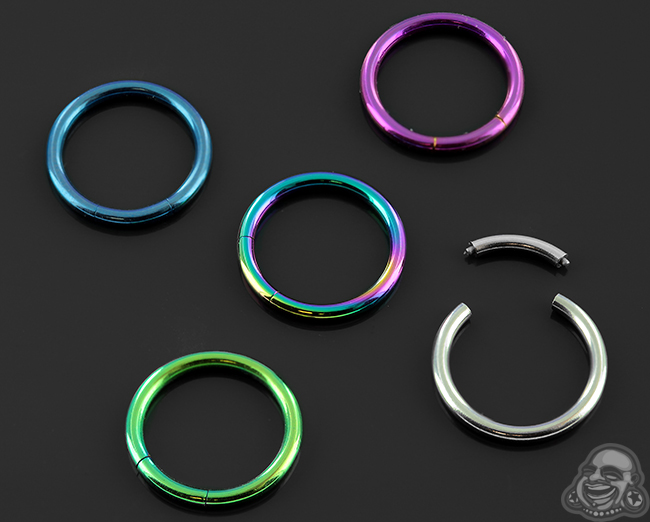
EVALUATION:
What are the uses of hydrogen
What is rusting and corrosion
What are the conditions necessary for rusting to take place?
How can rust be prevented?
CLASS WORK: differentiate between electroplating and galvanizing
further studies
http://scienceforkids.kidipede.com/chem ... drogen.htm
http://www.kids.esdb.bg/hydrogen.html
practice test
http://www.school-for-champions.com/che ... n_uses.htm
http://www.syvum.com/cgi/online/serve.c ... stion_hide
LESSON 12
SPECIFIC TOPIC: Rusting compared with burning
OBJECTIVES: At the end of the lesson, the students should be able to:
(i) mention similarities between rusting and burning
(ii) enumerate differences between rusting and burning
CONTENT:
RUSTING COMPARED WITH BURNING
1. Both burning and rusting are examples of oxidation
They both require oxygen to occur.
2. Differences between rusting and burning of substances are:
In burning only oxygen is required whereas both oxygen and water are required for rusting to take place.
Burning evolves large amount of heat whereas rusting process produces very little heat which is lost to the air.
Burning is fast and rapid whereas rusting is slow.
Differences:
RUSTING
1. Rusting is a slow process.
2.Little heat is released.
3.Both air and moisture are necessary for rusting.
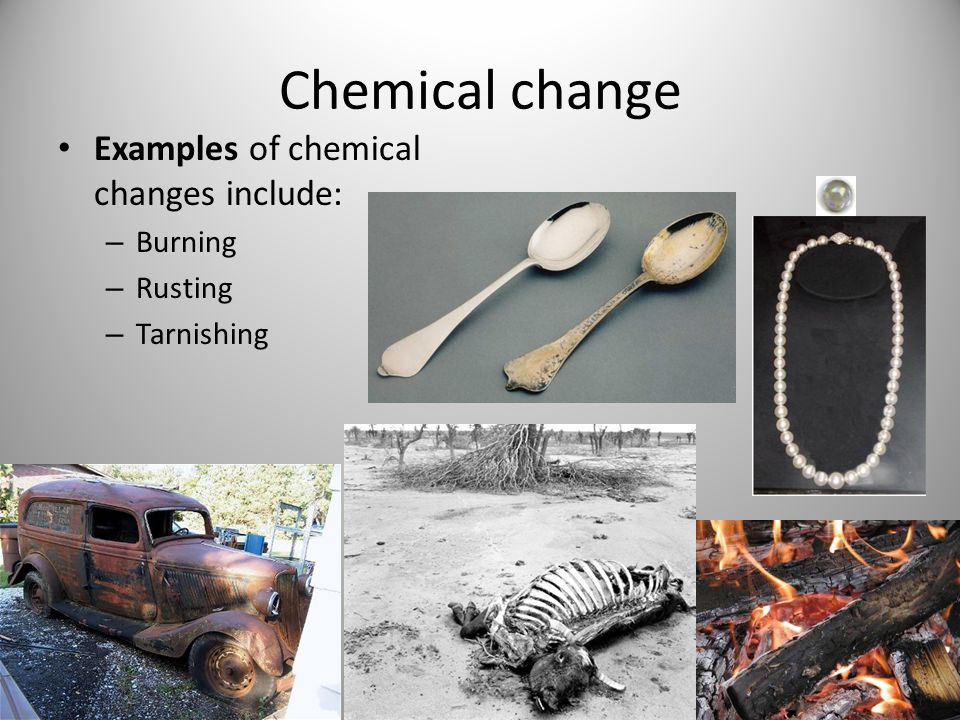
BURNING
1. Burning is fast oxidation.
2.large amounts of heat are released.
3.Only air is necessary for burning.

EVALUATION:
What are the similarities between rusting and burning?
What are the differences between rusting and burning?
ASSIGNMENT:how do you distinguish between hydrogen and oxygen?
LESSON 13
TOPIC: Human Respiratory System
CONTENT: 1 Meaning of respiration
2 Parts of human respiratory system
3 Functions of the respiratory system
4 Problems associated with breathing
Sub-Topic 1: Meaning of respiration
Respiration is the process by which food substances are broken down in our body to release energy. In big animals like human beings, air enters the body through special organs. These organs are called respiratory organs. Respiratory organs include ; Nostrils ,larynx ,pharynx ,trachea(wind pipe) ,bronchi ,lungs ,bronchioles ,alveoli ,and sometimes mouths.

Parts of respiratory system
Types of respiration
1 Aerobic respiration: This involves the use of oxygen to librate energy
C6 H12 O6 + 6O2 _________ 6CO2 + 6H2O + energy
Glucose Oxygen Carbon dioxide water

2 Anaerobic respirations: This involves a chemical process through which energy is released in the absence of oxygen.
C6H12O6_________________ 2C2H5OH + 2CO2 + energy
Glucose Ethanol Carbon dioxide


Functions of the respiratory system
The main functions of the respiratory system are:
1 Breathing [External respiration]
2 Cellular respiration [Internal respiration]
Breathing is the exchange of gases in which oxygen is breathed in and carbon-dioxide is breathed out. Breathing is one of the stages in respiration. Breathing supplies oxygen for respiration and takes away carbon dioxide which is a poisonous end product of respiration, while respiration is the process by which oxygen breathed in from the atmosphere is used in breaking down food substance in our body cells to release needed energy with carbon dioxide and water as the waste product
Differentiate between breathing and respiration
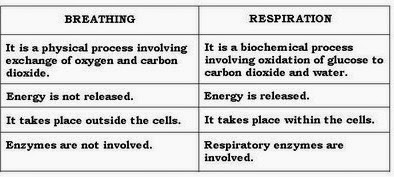
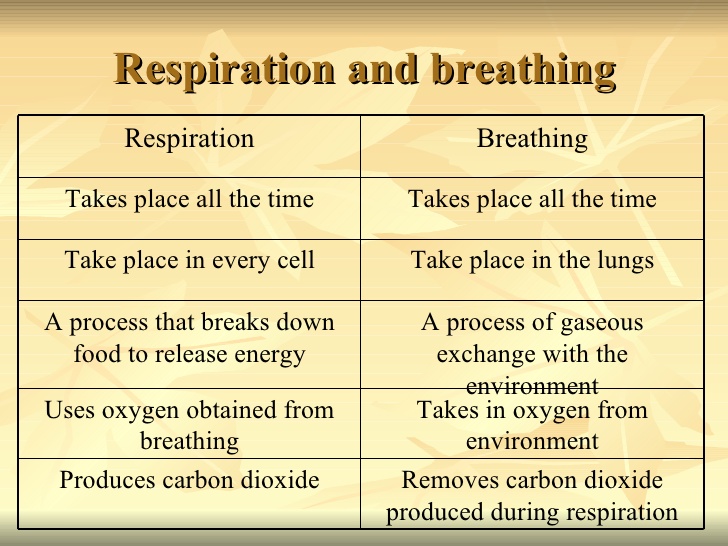
Problems associated with breathing
1 Asthma
2 Tuberculosis
3 Pneumonia
4 Bronchitis
5 Severe acute respiratory syndromes [SARS]
6 Hay fever
7 Silicosis

EVALUATION:
i Define respiration
ii List five respiratory organs
iii. Mention the problems associated with breathing
ASSIGNMENT: Explain the following Inspiration [ii] Expiration
Read STAN Basic Science Book Two, Chapter 9; Pages 50-55
REF. TEXTS:1 STAN Basic Science Project ,book two
2 Basic Science Made Easy, Book Two
3 Longman Basic Science, Book Two
TOPIC: Hydrogen
SPECIFIC TOPIC: Preparation and properties of Hydrogen
REFERENCE BOOKS: Basic Science for J.s.s 2 by Ndu et al
Progressive Integrated Science for J.s.s 2 by Danquah
OBJECTIVES: At the end of the lesson, the students should be able to:
(i)describe the preparation of hydrogen in the laboratory
(ii)enumerate the physical properties of hydrogen
(iii)outline the chemical properties of hydrogen
CONTENT:
HYDROGEN
Hydrogen is the lightest element. It is lighter than air.

PREPARATION OF HYDROGEN GAS
Hydrogen gas can be prepared in the laboratory in two ways:
1. By the action of an acid on a reactive metal:
When an acid is poured on an active metal, a salt is formed and hydrogen gas evolved. Neither heat nor catalyst is required. The hydrogen gas is collected by downward displacement of air as shown in the diagram below:
https://youtu.be/9hBCLoWwcWo
2.By reacting steam with magnesium:
Steam is water vapour and water is made up of hydrogen and oxygen atoms. Magnesium is a metal that can react with the oxygen in the steam to from magnesium oxide. The hydrogen in the steam is then collected.
https://youtu.be/fq7gFxw_5ZQ
PROPERTIES OF HYDROGEN
Physical Properties:
1. Hydrogen is a gas at room temperature
2. Hydrogen is colourless, tasteless and odourless
3. It is a neutral gas
Chemical Properties:
1. Hydrogen burns in air with a hot blue flame
2. It explodes when burnt in oxygen giving a pop sound and forming water.
3. It does not support combustion (burning)

https://youtu.be/zng77uTev2U
EVALUATION:
How is hydrogen prepared in the laboratory?
What are the physical properties of hydrogen?
What are the chemical properties of hydrogen?
ASSIGNMENT: what is the test for hydrogen?
further studies
http://www.sciencekids.co.nz/sciencefac ... rogen.html
practice test
http://www.allthetests.com/quiz21/quiz/ ... -Fuel-Cell
LESSON 11
SPECIFIC TOPIC: Uses of Hydrogen
OBJECTIVES: At the end of the lesson, the students should be able to:
(i)mention the uses of hydrogen
(ii)define rusting and corrosion
(iii)enumerate the conditions for rusting to take place
(iv)mention ways of preventing rusting
CONTENT:
USES OF HYDROGEN
1. Due to its lightness, hydrogen gas is used to fill balloons.
2. Light hydrogen is used as fuel in rocket space.
3. It is used in blow pipes foe welding
4. It is used for making margarine from vegetable oils.
RUSTING IN NATURE
Rusting is defined as the slow oxidation of iron in the presence of water. Rust is hydrated iron (III) oxide. Corrosion is a property of metals that makes them become dulled (less lustrous) when exposed to the atmosphere. The type of corrosion that occurs in iron is called rusting.

CONDITIONS NECESSARY FOR RUSTING1
For rusting to take place, iron must be exposed to air and water. If any of this condition is not met, rusting would not take place.
PREVENTION OF RUSTING
Rusting can be prevented by making sure that air and water do not get in contact with any object made of iron and this can be done by:
Painting: the object made of iron may be painted with gloss paint.

Greasing: by applying a layer of grease or oil on the surface of the iron, air and water are prevented from getting in contact with it.

Electroplating: this is the process of coating the surface of a metal with another metal by electric means.

Galvanizing: this is a type of electroplating in which iron is coated with zinc and this type of iron is called galvanized iron.

A coated ring

EVALUATION:
What are the uses of hydrogen
What is rusting and corrosion
What are the conditions necessary for rusting to take place?
How can rust be prevented?
CLASS WORK: differentiate between electroplating and galvanizing
further studies
http://scienceforkids.kidipede.com/chem ... drogen.htm
http://www.kids.esdb.bg/hydrogen.html
practice test
http://www.school-for-champions.com/che ... n_uses.htm
http://www.syvum.com/cgi/online/serve.c ... stion_hide
LESSON 12
SPECIFIC TOPIC: Rusting compared with burning
OBJECTIVES: At the end of the lesson, the students should be able to:
(i) mention similarities between rusting and burning
(ii) enumerate differences between rusting and burning
CONTENT:
RUSTING COMPARED WITH BURNING
1. Both burning and rusting are examples of oxidation
They both require oxygen to occur.
2. Differences between rusting and burning of substances are:
In burning only oxygen is required whereas both oxygen and water are required for rusting to take place.
Burning evolves large amount of heat whereas rusting process produces very little heat which is lost to the air.
Burning is fast and rapid whereas rusting is slow.
Differences:
RUSTING
1. Rusting is a slow process.
2.Little heat is released.
3.Both air and moisture are necessary for rusting.

BURNING
1. Burning is fast oxidation.
2.large amounts of heat are released.
3.Only air is necessary for burning.

EVALUATION:
What are the similarities between rusting and burning?
What are the differences between rusting and burning?
ASSIGNMENT:how do you distinguish between hydrogen and oxygen?
LESSON 13
TOPIC: Human Respiratory System
CONTENT: 1 Meaning of respiration
2 Parts of human respiratory system
3 Functions of the respiratory system
4 Problems associated with breathing
Sub-Topic 1: Meaning of respiration
Respiration is the process by which food substances are broken down in our body to release energy. In big animals like human beings, air enters the body through special organs. These organs are called respiratory organs. Respiratory organs include ; Nostrils ,larynx ,pharynx ,trachea(wind pipe) ,bronchi ,lungs ,bronchioles ,alveoli ,and sometimes mouths.

Parts of respiratory system
Types of respiration
1 Aerobic respiration: This involves the use of oxygen to librate energy
C6 H12 O6 + 6O2 _________ 6CO2 + 6H2O + energy
Glucose Oxygen Carbon dioxide water

2 Anaerobic respirations: This involves a chemical process through which energy is released in the absence of oxygen.
C6H12O6_________________ 2C2H5OH + 2CO2 + energy
Glucose Ethanol Carbon dioxide


Functions of the respiratory system
The main functions of the respiratory system are:
1 Breathing [External respiration]
2 Cellular respiration [Internal respiration]
Breathing is the exchange of gases in which oxygen is breathed in and carbon-dioxide is breathed out. Breathing is one of the stages in respiration. Breathing supplies oxygen for respiration and takes away carbon dioxide which is a poisonous end product of respiration, while respiration is the process by which oxygen breathed in from the atmosphere is used in breaking down food substance in our body cells to release needed energy with carbon dioxide and water as the waste product
Differentiate between breathing and respiration


Problems associated with breathing
1 Asthma
2 Tuberculosis
3 Pneumonia
4 Bronchitis
5 Severe acute respiratory syndromes [SARS]
6 Hay fever
7 Silicosis

EVALUATION:
i Define respiration
ii List five respiratory organs
iii. Mention the problems associated with breathing
ASSIGNMENT: Explain the following Inspiration [ii] Expiration
Read STAN Basic Science Book Two, Chapter 9; Pages 50-55
REF. TEXTS:1 STAN Basic Science Project ,book two
2 Basic Science Made Easy, Book Two
3 Longman Basic Science, Book Two
WEEK 6
LESSON 14
TOPIC: Energy Sources
SPECIFIC TOPIC: Same as topic
REFERENCE BOOKS: Basic Science for J.s.s 2 by Ndu et al
Progressive Integrated Science for J.s.s 2 by Danquah
OBJECTIVES: At the end of the lesson, the students should be able to:
(i)Mention the major source of energy
(ii)give examples of other sources of energy
CONTENT:
SOURCE OF ENERGY
The sun is the primary source of energy. It transmits radiant energy to the earth in form of light and heat. Light energy is converted into food by green plants through photosynthesis. Man takes in this energy by eating plant products like beans, yam, rice.
Therefore the sun is the primary source of energy for life. All other sources of energy are secondary sources, obtaining their energy from the sun. Examples of secondary sources are food, wood, petrol etc. They have energy stored in them. Other sources of energy are water, wing, chemicals, magnet, battery. Of all these sources of energy, sun is the primary source on which we are dependent for all our energy.
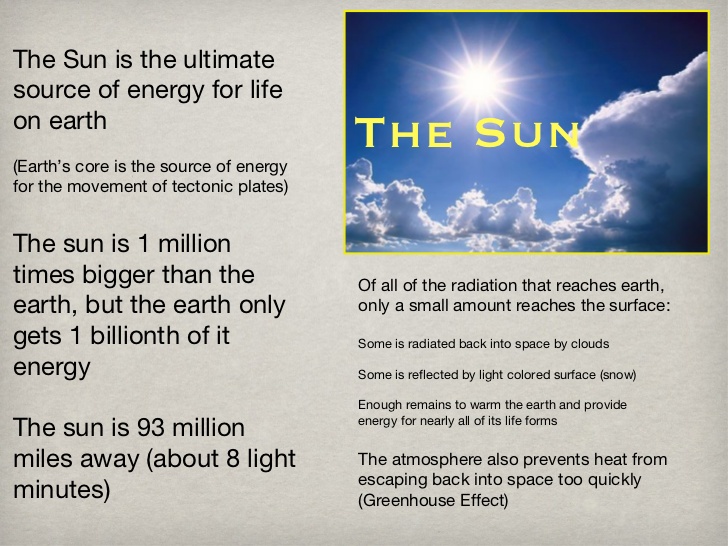
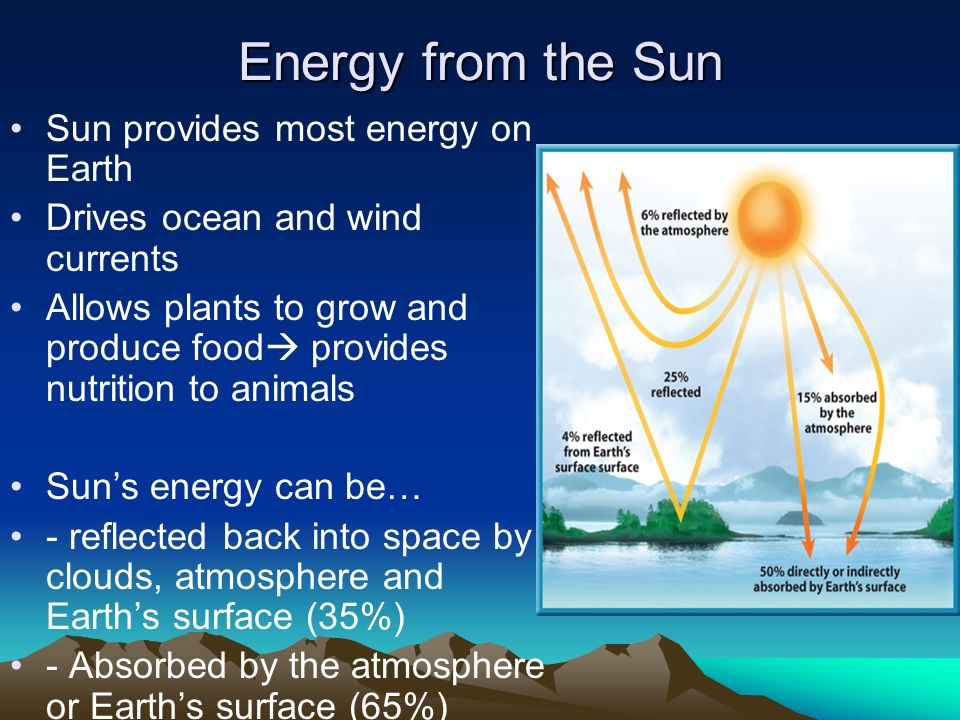
EVALUATION:
What is the major source of energy?
What are the examples of other sources of energy?
ASSIGNMENT:list five home appliances in which electrical energy is directly converted to heat energy.
further studies
http://www.kids.esdb.bg/basic.html
practice test
http://www.neok12.com/quiz/ENESRC02
http://www.neok12.com/quiz/ENESRC03
http://www.neok12.com/quiz/ENESRC04
LESSON 15
SPECIFIC TOPIC: Energy Sources
OBJECTIVES: At the end of the lesson, the students should be able to:
(i)describe manufactured sources of energy
(ii)give examples of petroleum products
(iii)describe the natural source of energy
CONTENT:
ENERGY SOURCES
There are many sources of energy .These can be classified into three major sources:
(1)Manufactured Sources: a number of various forms of energy at home are from manufactures sources. These include electricity from the mains, the dry cell batteries, and generators.
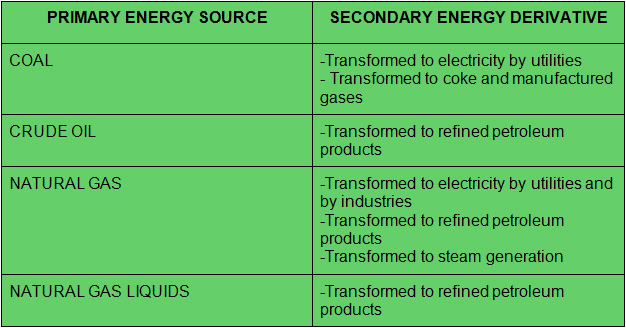
(2) Petroleum products: these are products of natural break down of organic materials over a long period. Examples are natural gases used for cooking and lightning; gasoline used for combustion engines in locomotives and kerosene for cooking.

(3) Natural Sources: the sun is the major natural source of energy on planets. It provides the radiant energy in form of heat and light.

EVALUATION:
What is the manufactured source of energy?
What are the examples of petroleum products?
What is the natural source of energy?
CLASS WORK:state the energy transfers that occur when work is done.
practice test
http://www.eia.gov/kids/energy.cfm?page=quiz
http://www.abc.net.au/science/games/qui ... eanenergy/
TOPIC: Energy Sources
SPECIFIC TOPIC: Same as topic
REFERENCE BOOKS: Basic Science for J.s.s 2 by Ndu et al
Progressive Integrated Science for J.s.s 2 by Danquah
OBJECTIVES: At the end of the lesson, the students should be able to:
(i)Mention the major source of energy
(ii)give examples of other sources of energy
CONTENT:
SOURCE OF ENERGY
The sun is the primary source of energy. It transmits radiant energy to the earth in form of light and heat. Light energy is converted into food by green plants through photosynthesis. Man takes in this energy by eating plant products like beans, yam, rice.
Therefore the sun is the primary source of energy for life. All other sources of energy are secondary sources, obtaining their energy from the sun. Examples of secondary sources are food, wood, petrol etc. They have energy stored in them. Other sources of energy are water, wing, chemicals, magnet, battery. Of all these sources of energy, sun is the primary source on which we are dependent for all our energy.


EVALUATION:
What is the major source of energy?
What are the examples of other sources of energy?
ASSIGNMENT:list five home appliances in which electrical energy is directly converted to heat energy.
further studies
http://www.kids.esdb.bg/basic.html
practice test
http://www.neok12.com/quiz/ENESRC02
http://www.neok12.com/quiz/ENESRC03
http://www.neok12.com/quiz/ENESRC04
LESSON 15
SPECIFIC TOPIC: Energy Sources
OBJECTIVES: At the end of the lesson, the students should be able to:
(i)describe manufactured sources of energy
(ii)give examples of petroleum products
(iii)describe the natural source of energy
CONTENT:
ENERGY SOURCES
There are many sources of energy .These can be classified into three major sources:
(1)Manufactured Sources: a number of various forms of energy at home are from manufactures sources. These include electricity from the mains, the dry cell batteries, and generators.

(2) Petroleum products: these are products of natural break down of organic materials over a long period. Examples are natural gases used for cooking and lightning; gasoline used for combustion engines in locomotives and kerosene for cooking.

(3) Natural Sources: the sun is the major natural source of energy on planets. It provides the radiant energy in form of heat and light.

EVALUATION:
What is the manufactured source of energy?
What are the examples of petroleum products?
What is the natural source of energy?
CLASS WORK:state the energy transfers that occur when work is done.
practice test
http://www.eia.gov/kids/energy.cfm?page=quiz
http://www.abc.net.au/science/games/qui ... eanenergy/
WEEK 7
LESSON 16
TOPIC: Circulatory system
CONTENT: Meaning of circulatory system
Parts of the respiratory system
Simple structure and function of the heart and blood vessels
Importance of the circulatory system
Blood defects and diseases
Importance of blood test and groupings e.g HIV/AIDS, sickle cell anaemia, leukemia
Meaning of circulatory system
The parts of the body which work together to ensure the circulation of oxygen ,digested food substance as well as transportation of waste products from one part of the body to another is referred to as the circulatory system.
https://youtu.be/AIcAF34MPpU
Circulatory system
https://youtu.be/oE8tGkP5_tc
Parts of the human circulatory system
The circulatory system is made up of
The blood,
The heart ,and
The blood vessels.
Components of blood
Blood consists of the following:
Red blood cells [Erythrocytes]
White blood cells [Leucocytes]
Platelets
Plasma
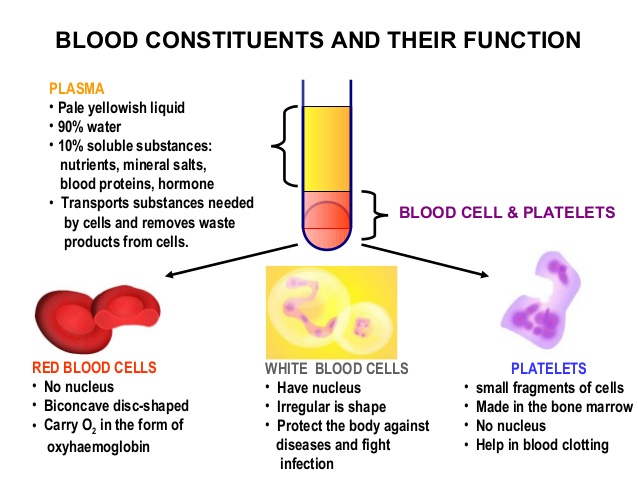
Blood constituents
Functions of the blood
1 It carries the digested food materials to all parts of the body
2 It protects body against diseases.
3 It transports oxygen to all parts of the body for oxidation of food.
4 It regulates body temperature
5 It transports waste materials to excretory organs for excretion
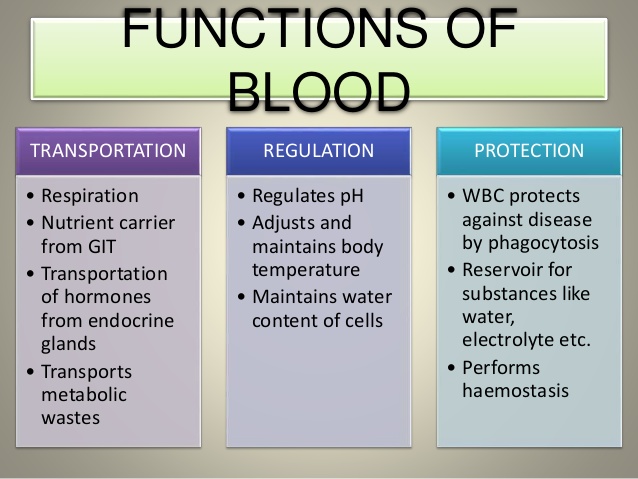
EVALUATION: 1 Mention functions of blood
2 List the components of the blood
LESSON 17
Structure of the Heart
The Heart
Heart is a muscular organ which has four chambers. The four chambers consist of two upper chambers which are the right auricle and the left auricle. The two lower chambers which are the right ventricle and the left ventricle. Between the auricles and ventricles are two small openings [valves].The openings between the left auricle and the left ventricle is called the bicuspid valve while the opening between the right auricle and the right ventricle is called the tricuspid valve. The heart is located in the chest cavity of the body and is connected to all parts of the body by means of blood vessels.
Functions of the heart
1 It is the organ for pumping blood to all parts of the body.
2 It keeps blood in continuous circulation.
3 Pumping action of the heart is known as heart beat, man has an average of 72 heat beat per minute.
Blood Vessels: Blood moves around our body through tubes called blood vessels. There are three main types of blood vessels on the human circulatory system .These are arteries, veins and capillaries. Arteries
Arteries carry blood away from the heart to all parts of the body.
Veins carry blood to the heart from all parts of the body.
Capillaries connect arteries to veins.
https://youtu.be/oHMmtqKgs50
EVALUATION: 1 Mention the functions of the heart.
2 List blood vessels and their uses.
LESSON 18
Importance of the human circulatory system
1 It serves as the transport system of our body, for carrying many substances from one part of the body to another.
2 It serves as body defense against diseases and harmful organisms.
3 It serves as the cleaning agent for the body by carrying poisonous waste products from where they are produced to the parts of the body to remove them.
Blood detects and diseases
1. Sickle cell
2. Anaemia
3. Leukemia
4. High blood pressure
5. Coronary thrombosis
6. Stroke
7. Hemophilia
8. HIV/AIDS
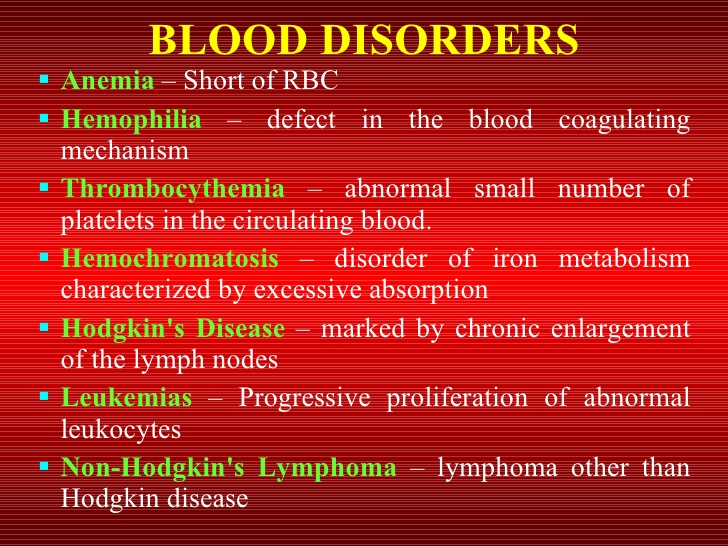
Importance of blood test
1 To determine the health status of an individual.
2 To detect some blood diseases e. g HIV/AIDS.
3 To determine the blood group of an individual.
4 To screen blood before transfusion.
5 To confirm pregnancy.
6 To monitor known health condition e. g blood sugar level.
7 To choose marriage partners.
8 To determine the genotype of an individual e .g AA, AS, SS

Blood groups
Human blood is classified into four groups. The groups are:
Group A, B, AB, O
Group A can receive blood from group A and O
Group B can receive blood from group B and O
Group AB can receive blood from group A, B, and O
Group O can receive blood from group O only.
Blood group O is a universal donor and blood group AB is a universal recipient.
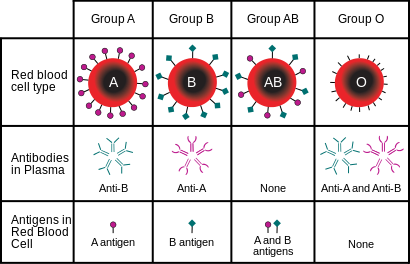
EVALUATION: 1 Mention the blood groups.
2 List five importance of blood test.
ASSIGNMENT: Read STAN Basic Science for JSS 2 Pages 42-49
Mention the digestive organs.
REF. TEXTS: 1. STAN Basic Science Project, book two
2. Basic Science Made Easy, Book Two
3. Longman Basic Science, Book Two
TOPIC: Circulatory system
CONTENT: Meaning of circulatory system
Parts of the respiratory system
Simple structure and function of the heart and blood vessels
Importance of the circulatory system
Blood defects and diseases
Importance of blood test and groupings e.g HIV/AIDS, sickle cell anaemia, leukemia
Meaning of circulatory system
The parts of the body which work together to ensure the circulation of oxygen ,digested food substance as well as transportation of waste products from one part of the body to another is referred to as the circulatory system.
https://youtu.be/AIcAF34MPpU
Circulatory system
https://youtu.be/oE8tGkP5_tc
Parts of the human circulatory system
The circulatory system is made up of
The blood,
The heart ,and
The blood vessels.
Components of blood
Blood consists of the following:
Red blood cells [Erythrocytes]
White blood cells [Leucocytes]
Platelets
Plasma

Blood constituents
Functions of the blood
1 It carries the digested food materials to all parts of the body
2 It protects body against diseases.
3 It transports oxygen to all parts of the body for oxidation of food.
4 It regulates body temperature
5 It transports waste materials to excretory organs for excretion

EVALUATION: 1 Mention functions of blood
2 List the components of the blood
LESSON 17
Structure of the Heart
The Heart
Heart is a muscular organ which has four chambers. The four chambers consist of two upper chambers which are the right auricle and the left auricle. The two lower chambers which are the right ventricle and the left ventricle. Between the auricles and ventricles are two small openings [valves].The openings between the left auricle and the left ventricle is called the bicuspid valve while the opening between the right auricle and the right ventricle is called the tricuspid valve. The heart is located in the chest cavity of the body and is connected to all parts of the body by means of blood vessels.
Functions of the heart
1 It is the organ for pumping blood to all parts of the body.
2 It keeps blood in continuous circulation.
3 Pumping action of the heart is known as heart beat, man has an average of 72 heat beat per minute.
Blood Vessels: Blood moves around our body through tubes called blood vessels. There are three main types of blood vessels on the human circulatory system .These are arteries, veins and capillaries. Arteries
Arteries carry blood away from the heart to all parts of the body.
Veins carry blood to the heart from all parts of the body.
Capillaries connect arteries to veins.
https://youtu.be/oHMmtqKgs50
EVALUATION: 1 Mention the functions of the heart.
2 List blood vessels and their uses.
LESSON 18
Importance of the human circulatory system
1 It serves as the transport system of our body, for carrying many substances from one part of the body to another.
2 It serves as body defense against diseases and harmful organisms.
3 It serves as the cleaning agent for the body by carrying poisonous waste products from where they are produced to the parts of the body to remove them.
Blood detects and diseases
1. Sickle cell
2. Anaemia
3. Leukemia
4. High blood pressure
5. Coronary thrombosis
6. Stroke
7. Hemophilia
8. HIV/AIDS

Importance of blood test
1 To determine the health status of an individual.
2 To detect some blood diseases e. g HIV/AIDS.
3 To determine the blood group of an individual.
4 To screen blood before transfusion.
5 To confirm pregnancy.
6 To monitor known health condition e. g blood sugar level.
7 To choose marriage partners.
8 To determine the genotype of an individual e .g AA, AS, SS

Blood groups
Human blood is classified into four groups. The groups are:
Group A, B, AB, O
Group A can receive blood from group A and O
Group B can receive blood from group B and O
Group AB can receive blood from group A, B, and O
Group O can receive blood from group O only.
Blood group O is a universal donor and blood group AB is a universal recipient.

EVALUATION: 1 Mention the blood groups.
2 List five importance of blood test.
ASSIGNMENT: Read STAN Basic Science for JSS 2 Pages 42-49
Mention the digestive organs.
REF. TEXTS: 1. STAN Basic Science Project, book two
2. Basic Science Made Easy, Book Two
3. Longman Basic Science, Book Two
WEEK 8
LESSON 19
TOPIC: Digestive system
CONTENT: Definition of terms e. g digestion and digestive system etc.
Parts of digestive system from mouth to anus.
Digestion process at various stages.
Absorption of food.
Simple food test.
Definition of terms e. g digestion and digestive system etc.
Digestion is the process by which food substances are broken down into simple and soluble form that can be readily absorbed into the body.
Digestive system
All the parts of the body which work together to ensure digestion of food are called the digestive system.
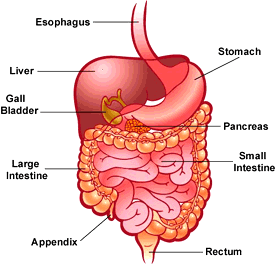
Ingestion: This is the taking in of food into the mouth.
Absorption: This process by which food from digestion is taken into the animal body fluid.
Egestion: This is the process whereby undigested food is removed as faeces through the anus from the body.
Parts of the digestive system
The digestive system consists of a long tube from the mouth to the anus with various organs connected with it. The long tube is the alimentary canal and is made up of the organs below:
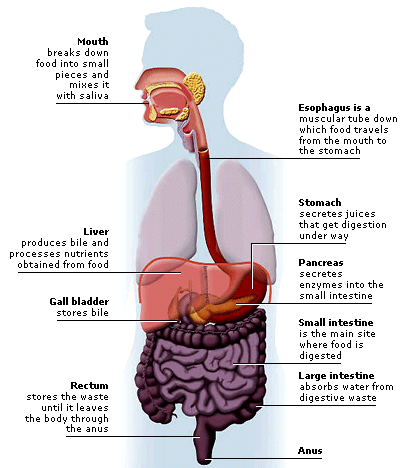
Digestion process at various stages
1 The mouth: Food is mixed with saliva from the salivary glands.Saliva contains the enzyme ptyalin which starts the digestion of starch, and converts it to maltose.The softened food is swallowed into the oesophagus (gullet) as a small ball or bolus.
2 The oesophagus (gullet): It is a narrow tube which connects the mouth to the stomach. Food that has been chewed and partially digested in the mouth is pushed down the gullet into the stomach by the process of peristalsis. Peristalsis is the motion by which food is pushed along the gullet.
3 The stomach: The stomach is a sac-like organ. It is made up of connective tissue which holds the organ together. The stomach secretes which contains hydrochloric acid which stops starch digestion; enzyme pepsin acts on proteins and converts it to peptone and enzyme rennin coagulates milk. The semi-liquid and partly digested food in the stomach is called chyme and passes into the first section of the small intestine-duodenum.
4 Small Intestine: Pancreas in the small intestine secretes pancreatic juice which contains enzymes lipase, tripsin and amylase that help to digest fats and oil, protein and carbohydrates in the duodenum which is the first section of the small intestine. Bile from the liver is stored in the gall bladder, and enters the duodenum through bile duct. Bile emulsifies fats .Digestion of food is completed in the small intestine.
5 Large Intestine: The part of the food reaching the large intestine is waste materials, and is useless to the body. The large intestine absorbs any water in the waste materials. The hard waste (faeces) is passed out through the anus.
https://youtu.be/s1q2srfUU0g
Absorption of food
At the end of the digestion all end products, vitamins, salts and water are absorbed in the small intestine through special structures which appear like small fingers on the wall of the intestine. They are called villi. They help to increase the surface area of the small intestine for absorption of food substance into the blood stream.
https://youtu.be/ZeUlh9Cou38
Simple food test
All food we eat can be classified into six types. They are carbohydrates, vitamins, fats and oils, mineral salts, proteins and water. All these food are chemical in nature. They can react with other chemicals to produce new substances .The scientists use simple food tests to identify food types or the contents of food materials.
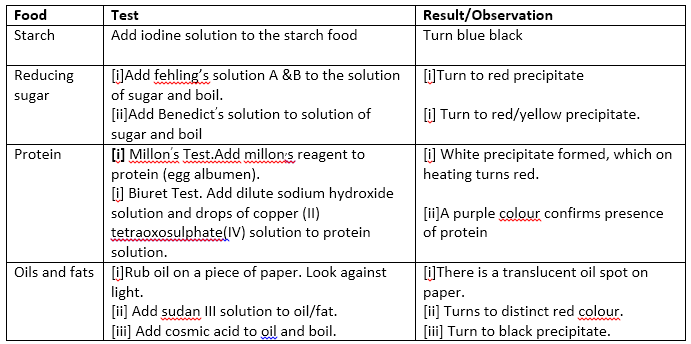
https://youtu.be/akMLGbNA0gE
Practice Test 1
TOPIC: Digestive system
CONTENT: Definition of terms e. g digestion and digestive system etc.
Parts of digestive system from mouth to anus.
Digestion process at various stages.
Absorption of food.
Simple food test.
Definition of terms e. g digestion and digestive system etc.
Digestion is the process by which food substances are broken down into simple and soluble form that can be readily absorbed into the body.
Digestive system
All the parts of the body which work together to ensure digestion of food are called the digestive system.

Ingestion: This is the taking in of food into the mouth.
Absorption: This process by which food from digestion is taken into the animal body fluid.
Egestion: This is the process whereby undigested food is removed as faeces through the anus from the body.
Parts of the digestive system
The digestive system consists of a long tube from the mouth to the anus with various organs connected with it. The long tube is the alimentary canal and is made up of the organs below:

Digestion process at various stages
1 The mouth: Food is mixed with saliva from the salivary glands.Saliva contains the enzyme ptyalin which starts the digestion of starch, and converts it to maltose.The softened food is swallowed into the oesophagus (gullet) as a small ball or bolus.
2 The oesophagus (gullet): It is a narrow tube which connects the mouth to the stomach. Food that has been chewed and partially digested in the mouth is pushed down the gullet into the stomach by the process of peristalsis. Peristalsis is the motion by which food is pushed along the gullet.
3 The stomach: The stomach is a sac-like organ. It is made up of connective tissue which holds the organ together. The stomach secretes which contains hydrochloric acid which stops starch digestion; enzyme pepsin acts on proteins and converts it to peptone and enzyme rennin coagulates milk. The semi-liquid and partly digested food in the stomach is called chyme and passes into the first section of the small intestine-duodenum.
4 Small Intestine: Pancreas in the small intestine secretes pancreatic juice which contains enzymes lipase, tripsin and amylase that help to digest fats and oil, protein and carbohydrates in the duodenum which is the first section of the small intestine. Bile from the liver is stored in the gall bladder, and enters the duodenum through bile duct. Bile emulsifies fats .Digestion of food is completed in the small intestine.
5 Large Intestine: The part of the food reaching the large intestine is waste materials, and is useless to the body. The large intestine absorbs any water in the waste materials. The hard waste (faeces) is passed out through the anus.
https://youtu.be/s1q2srfUU0g
Absorption of food
At the end of the digestion all end products, vitamins, salts and water are absorbed in the small intestine through special structures which appear like small fingers on the wall of the intestine. They are called villi. They help to increase the surface area of the small intestine for absorption of food substance into the blood stream.
https://youtu.be/ZeUlh9Cou38
Simple food test
All food we eat can be classified into six types. They are carbohydrates, vitamins, fats and oils, mineral salts, proteins and water. All these food are chemical in nature. They can react with other chemicals to produce new substances .The scientists use simple food tests to identify food types or the contents of food materials.

https://youtu.be/akMLGbNA0gE
Practice Test 1
WEEK 9
LESSON 20
TOPIC: REPRODUCTIVE SYSTEM
CONTENTS: 1.Parts of Reproductive system (male and female) and their functions.
2. Puberty
3. Secondary sexual characteristics
4. Importance of Reproduction
Parts of Reproduction (male and female) and their functions
Reproduction is the ability of living organisms to produce young ones of their kinds. Reproduction is one of the characteristics of living things that ensure continuity of life.
TYPES OF REPRODUCTION
There are two types of reproduction. These are
(i) Asexual Reproduction: This involves one individual forming new off-springs. Examples are (a) Vegetative propagation in plants (b) Binary fission in amoeba (c) Budding in Hydra and (d) Spore production in Mucor and Mushroom.

(ii) Sexual Reproduction: This involves mating of male and female in order to give rise to new off-springs. All new life comes from cells i.e sex cells. The male sex produces the male gametes (sperms or spermatozoa) from testes, the reproductive organs. The female sex produces the female gametes (ovum or egg cell) from the ovary, the female reproductive organs.
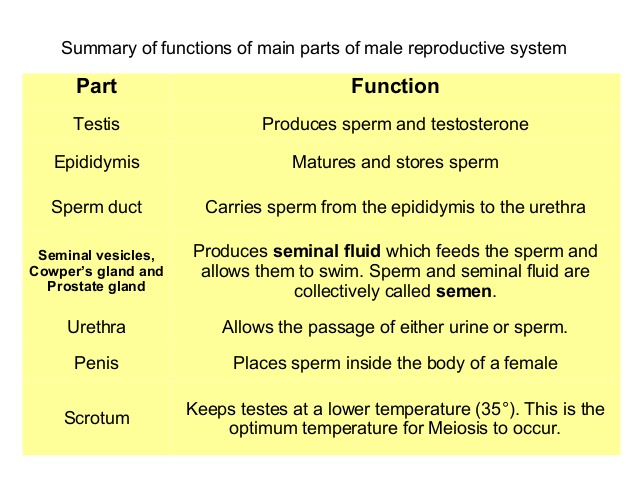
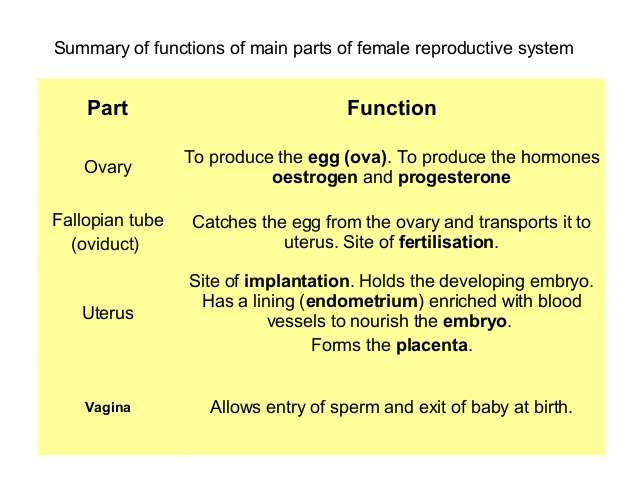
EVALUATION
1. What is reproduction?
2. Mention the two types of reproduction we have
3. State the female reproductive organs we have
LESSON 21
PUBERTY: This is the same as Adolescence. It is the age at which a boy or a girl reaches maturity (grow into adult).There are series of signs when a boy or a girl grow into maturity. These are:
Girls Boys
1.Height: Girls tend to be taller than boys of the same age
2.The breast develop
3.Hips becomes broader
4.Hair grows in armpit and private part
5.Menstruation begins/starts Height: Boys later catch up with girls and may later overtake them.
The voice ‘cracks’ and becomes deeper.
Shoulder becomes broader.
Hair grows in the armpit and private part.
Semen discharge during sleep.

Male Reproductive System
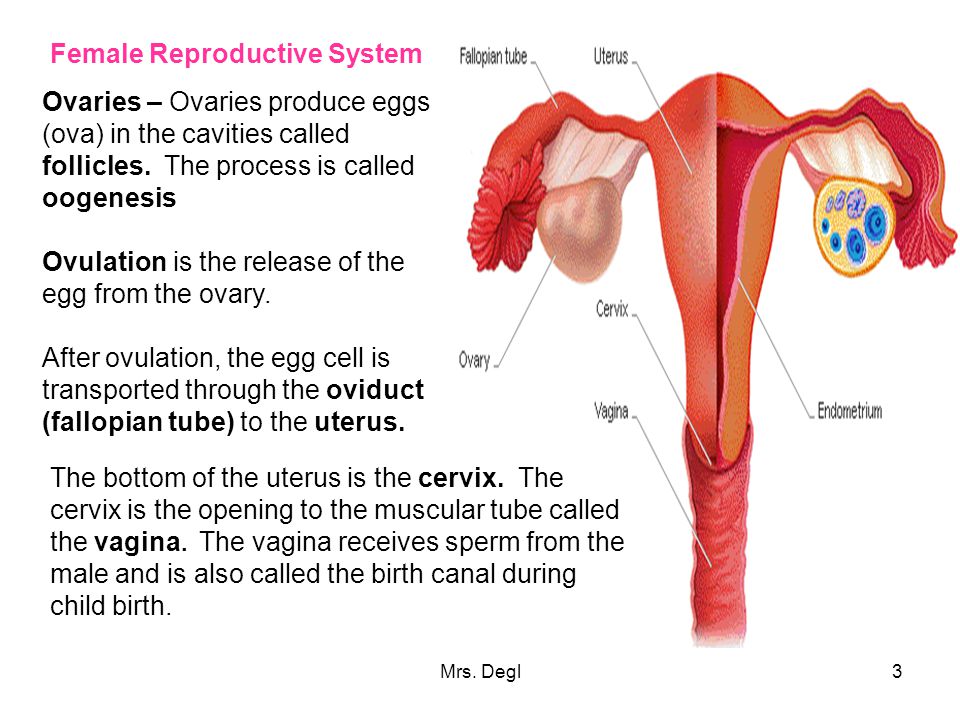
Female Reproductive System.
Secondary Sexual Characteristics
Secondary sexual characteristics are features that distinguish the two sexes of a species, but that are not directly part of the reproductive system. In humans, secondary sexual characteristics include:
Male

o Growth of body hair, including underarm, abdominal, chest, and pubic hair. Loss of scalp hair androgenic alopecia can also occur
o Greater mass of thigh muscles in front of the femur, rather than behind it as is typical in mature females
o Growth of facial hair
o Enlargement of larynx (Adam's apple) and deepening of voice Increased stature; adult males are taller than adult females, on average
o Heavier skull and bone structure
o Increased muscle mass and strength
o Larger hands and feet than women, prepubescent boys and girls
o Square face
o Small waist, but wider than females
o Broadening of shoulders and chest; shoulders wider than hips Increased secretions of oil and sweat glands, often causing acne and body odor Coarsening or rigidity of skin texture, due to less subcutaneous fat
o Higher waist-to-hip ratio than prepubescent or adult females or prepubescent males, on average
o Enlargement growth of the penis
Female
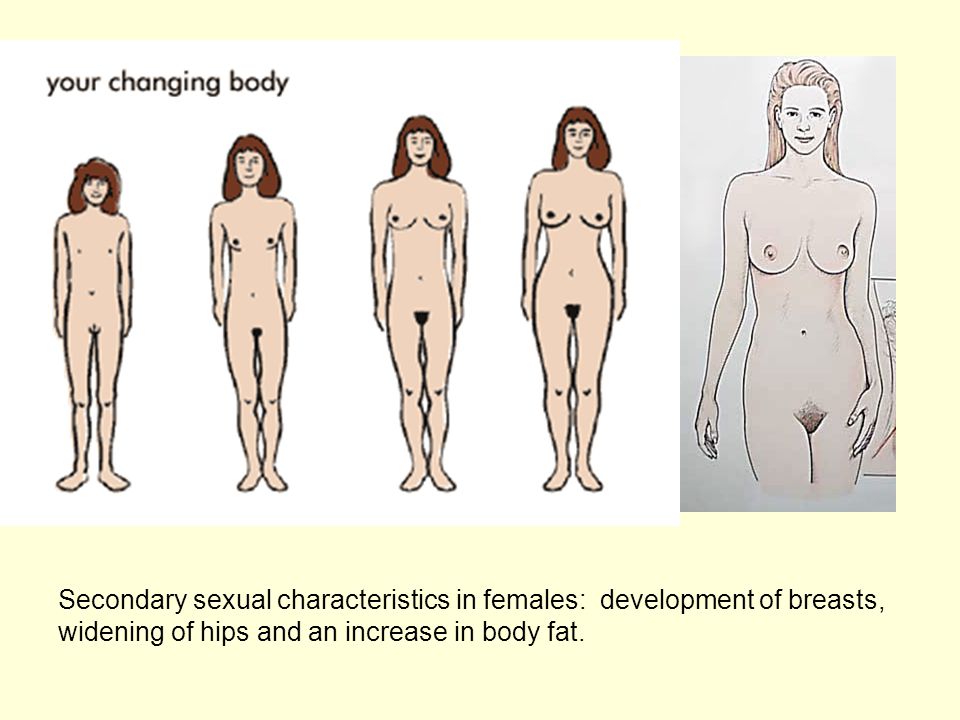
o Enlargement of breasts and erection of nipples. Growth of body hair, most prominently underarm and pubic hair
o Greater development of thigh muscles behind the femur, rather than in front of it
o Widening of hips; lower waist to hip ratio than adult males, on average
o Smaller hands and feet than men
o Rounder face
o Smaller waist than men
o Increased secretions of oil and sweat glands, often causing acne and body odor
o Upper arms approximately 2 cm longer, on average, for a given height Changed distribution in weight and fat; more subcutaneous fat and fat deposits mainly around the buttocks, thighs and hips.

IMPORTANCE OF REPRODUCTION.
1. It creates next generation.
2. It maintains the unique identity of a species.
3. It creates variations in species.
4. New species facilitate evolution of organisms which is necessary for survival as
environmental conditions keep on changing from time to time.
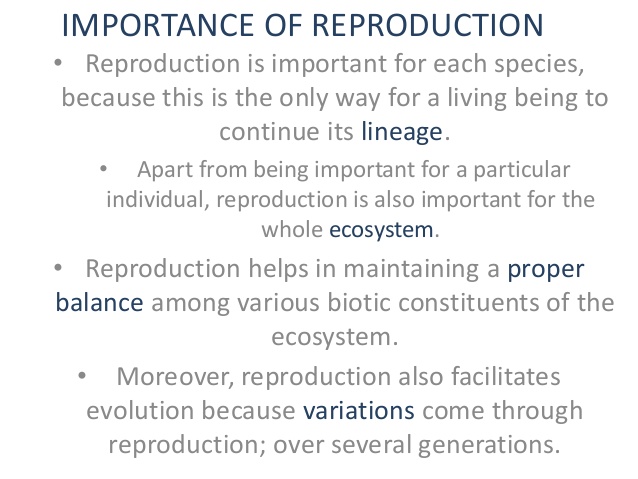
EVALUATION
1. What is Reproduction?
2. State the two types of Reproduction.
3. State four signs of puberty in girls.
4. Mention five signs of sexual characteristics in male.
5. Enumerate three importance of Reproduction.
READING ASSIGNMENT
Students are to read about ‘The Excretory System’ from (i) ‘Nigerian Basic Science Project’ pages 60-62 and (ii) Basic Science (made easy) Book Two pages 27-30.
Further Studies
Practice Test 1
Practice Test 2
TOPIC: REPRODUCTIVE SYSTEM
CONTENTS: 1.Parts of Reproductive system (male and female) and their functions.
2. Puberty
3. Secondary sexual characteristics
4. Importance of Reproduction
Parts of Reproduction (male and female) and their functions
Reproduction is the ability of living organisms to produce young ones of their kinds. Reproduction is one of the characteristics of living things that ensure continuity of life.
TYPES OF REPRODUCTION
There are two types of reproduction. These are
(i) Asexual Reproduction: This involves one individual forming new off-springs. Examples are (a) Vegetative propagation in plants (b) Binary fission in amoeba (c) Budding in Hydra and (d) Spore production in Mucor and Mushroom.

(ii) Sexual Reproduction: This involves mating of male and female in order to give rise to new off-springs. All new life comes from cells i.e sex cells. The male sex produces the male gametes (sperms or spermatozoa) from testes, the reproductive organs. The female sex produces the female gametes (ovum or egg cell) from the ovary, the female reproductive organs.


EVALUATION
1. What is reproduction?
2. Mention the two types of reproduction we have
3. State the female reproductive organs we have
LESSON 21
PUBERTY: This is the same as Adolescence. It is the age at which a boy or a girl reaches maturity (grow into adult).There are series of signs when a boy or a girl grow into maturity. These are:
Girls Boys
1.Height: Girls tend to be taller than boys of the same age
2.The breast develop
3.Hips becomes broader
4.Hair grows in armpit and private part
5.Menstruation begins/starts Height: Boys later catch up with girls and may later overtake them.
The voice ‘cracks’ and becomes deeper.
Shoulder becomes broader.
Hair grows in the armpit and private part.
Semen discharge during sleep.

Male Reproductive System

Female Reproductive System.
Secondary Sexual Characteristics
Secondary sexual characteristics are features that distinguish the two sexes of a species, but that are not directly part of the reproductive system. In humans, secondary sexual characteristics include:
Male

o Growth of body hair, including underarm, abdominal, chest, and pubic hair. Loss of scalp hair androgenic alopecia can also occur
o Greater mass of thigh muscles in front of the femur, rather than behind it as is typical in mature females
o Growth of facial hair
o Enlargement of larynx (Adam's apple) and deepening of voice Increased stature; adult males are taller than adult females, on average
o Heavier skull and bone structure
o Increased muscle mass and strength
o Larger hands and feet than women, prepubescent boys and girls
o Square face
o Small waist, but wider than females
o Broadening of shoulders and chest; shoulders wider than hips Increased secretions of oil and sweat glands, often causing acne and body odor Coarsening or rigidity of skin texture, due to less subcutaneous fat
o Higher waist-to-hip ratio than prepubescent or adult females or prepubescent males, on average
o Enlargement growth of the penis
Female

o Enlargement of breasts and erection of nipples. Growth of body hair, most prominently underarm and pubic hair
o Greater development of thigh muscles behind the femur, rather than in front of it
o Widening of hips; lower waist to hip ratio than adult males, on average
o Smaller hands and feet than men
o Rounder face
o Smaller waist than men
o Increased secretions of oil and sweat glands, often causing acne and body odor
o Upper arms approximately 2 cm longer, on average, for a given height Changed distribution in weight and fat; more subcutaneous fat and fat deposits mainly around the buttocks, thighs and hips.

IMPORTANCE OF REPRODUCTION.
1. It creates next generation.
2. It maintains the unique identity of a species.
3. It creates variations in species.
4. New species facilitate evolution of organisms which is necessary for survival as
environmental conditions keep on changing from time to time.

EVALUATION
1. What is Reproduction?
2. State the two types of Reproduction.
3. State four signs of puberty in girls.
4. Mention five signs of sexual characteristics in male.
5. Enumerate three importance of Reproduction.
READING ASSIGNMENT
Students are to read about ‘The Excretory System’ from (i) ‘Nigerian Basic Science Project’ pages 60-62 and (ii) Basic Science (made easy) Book Two pages 27-30.
Further Studies
Practice Test 1
Practice Test 2